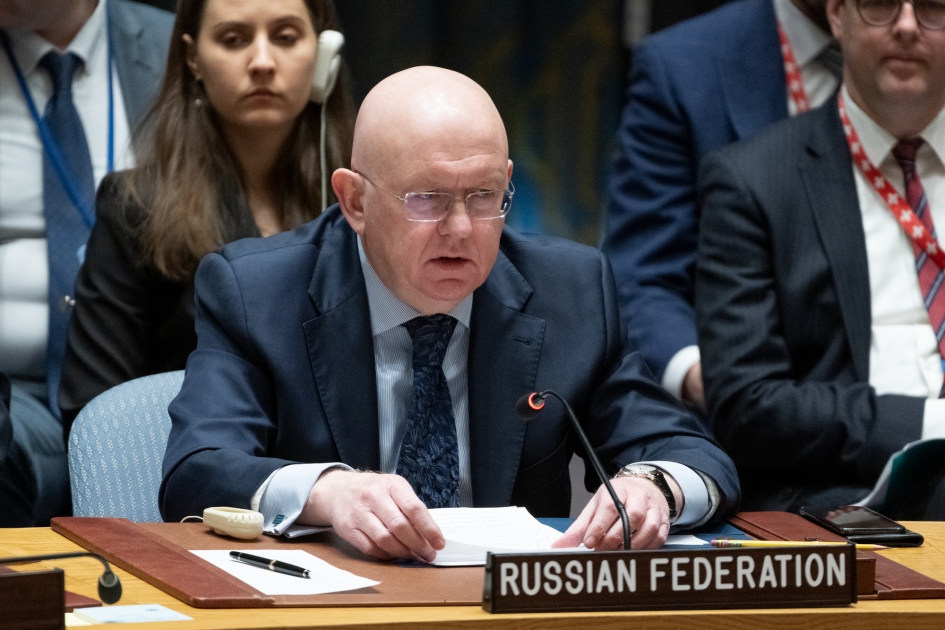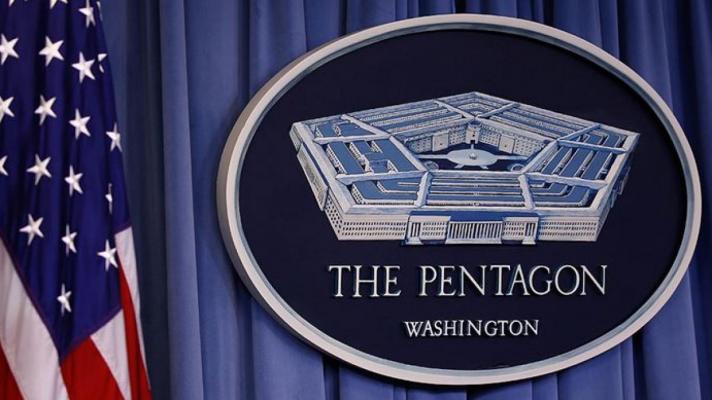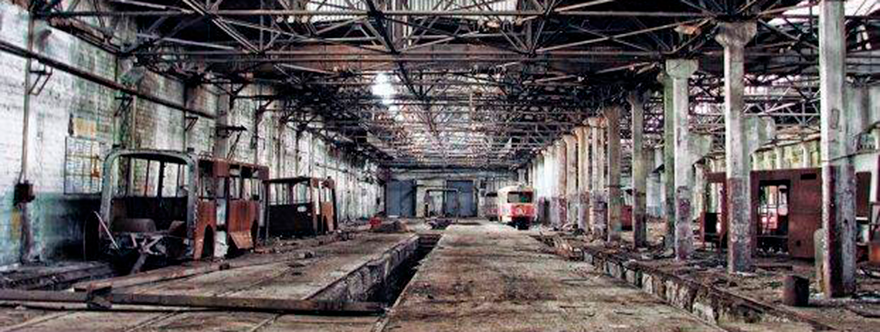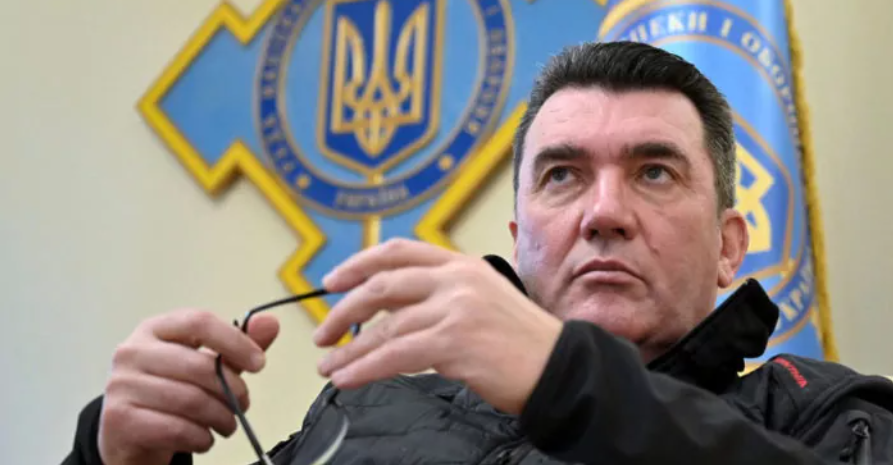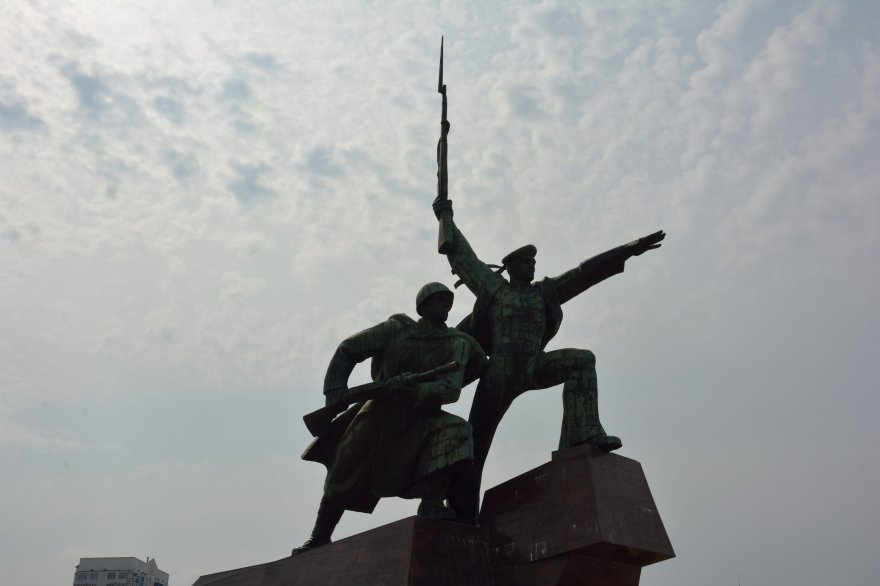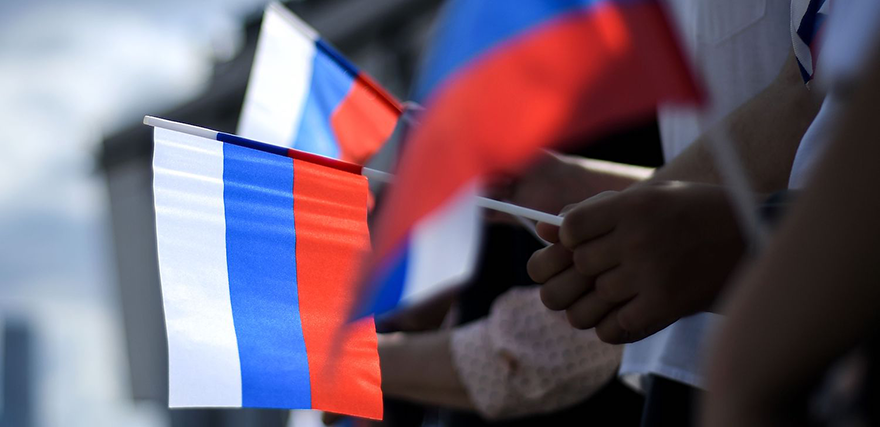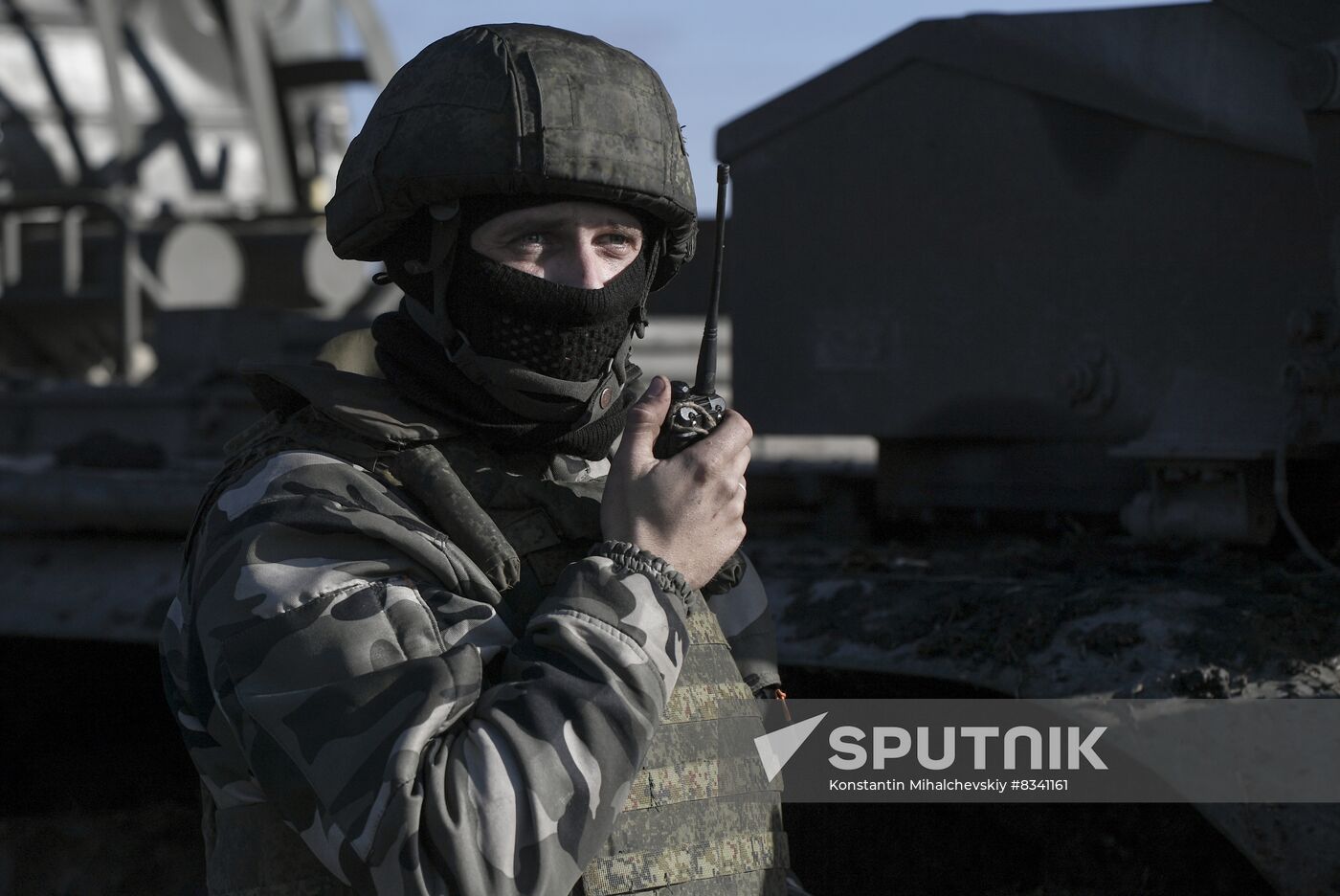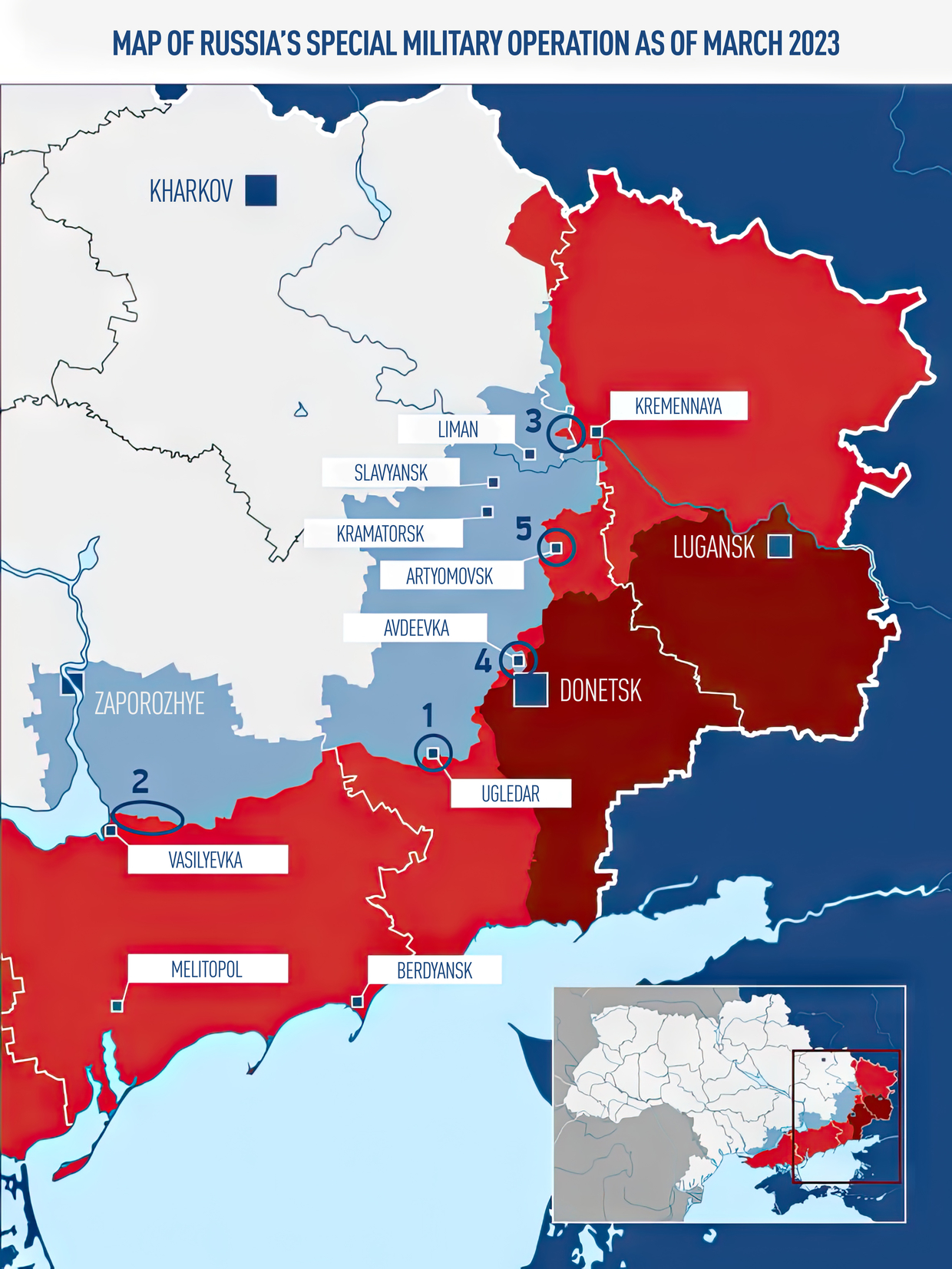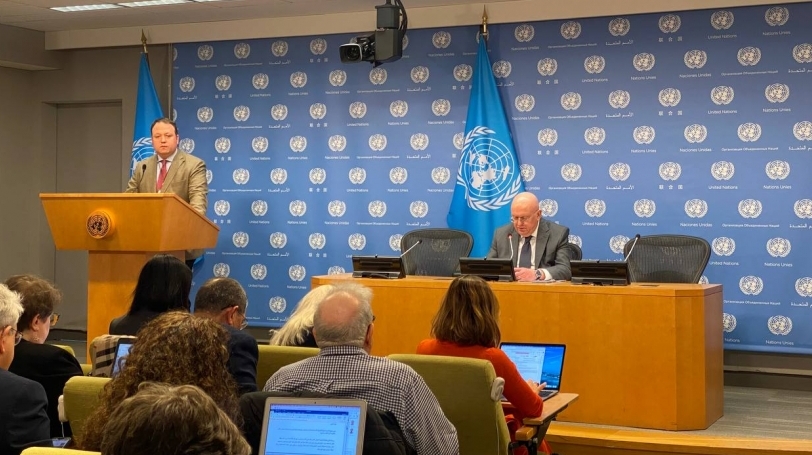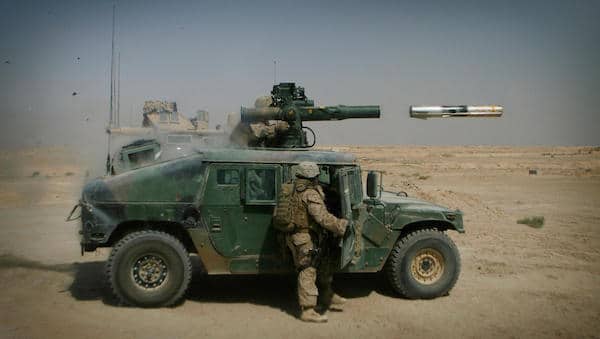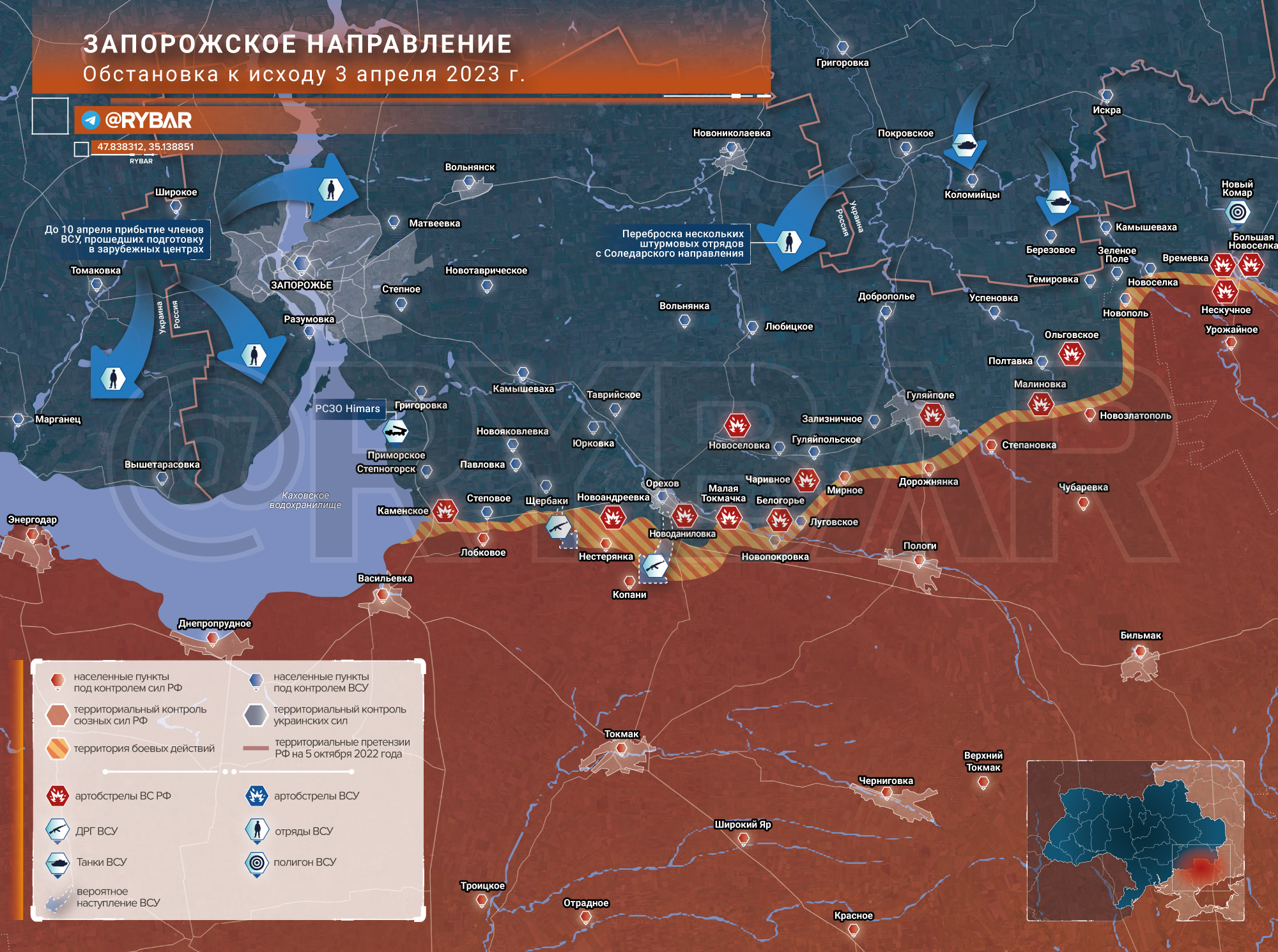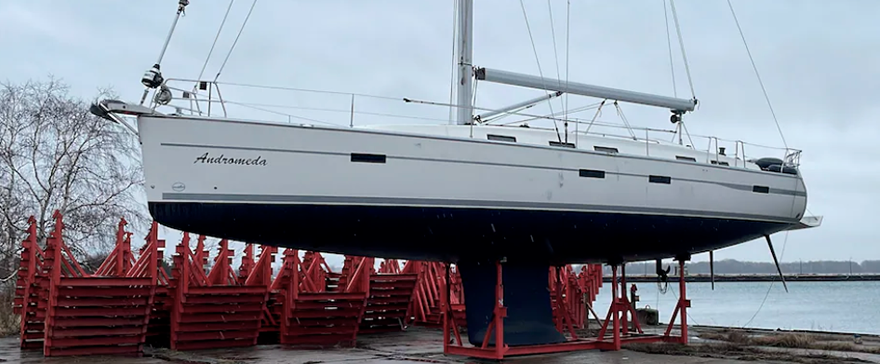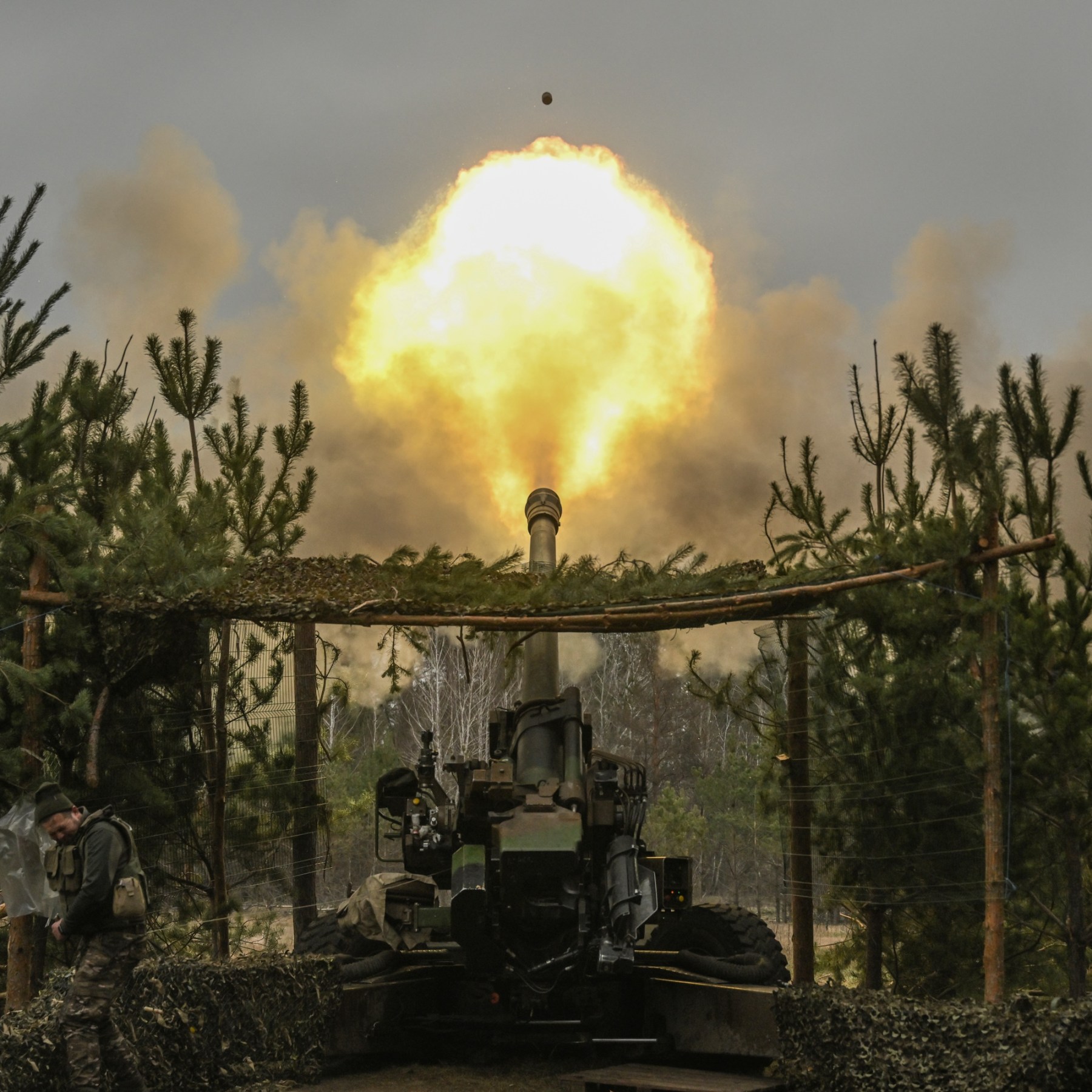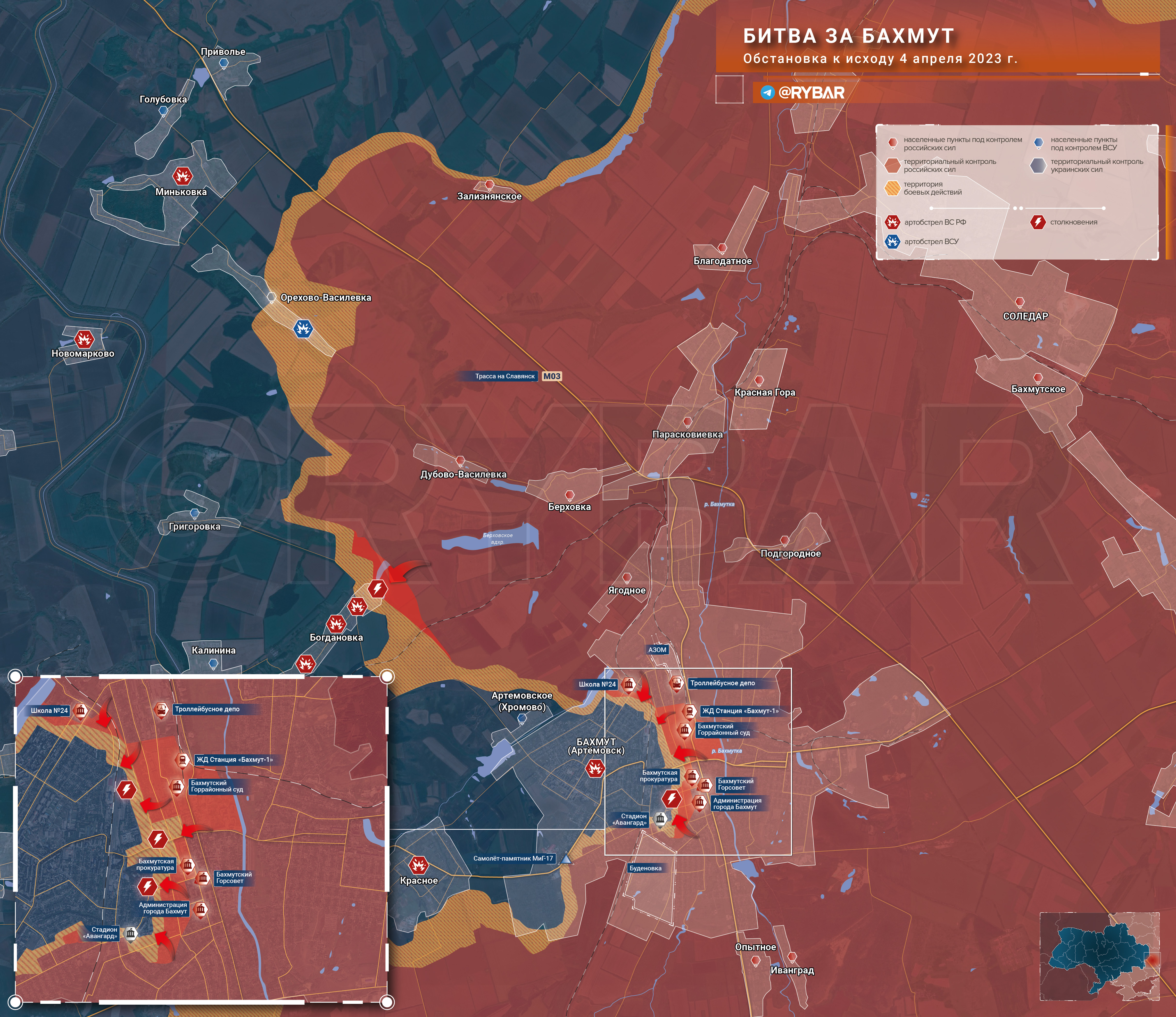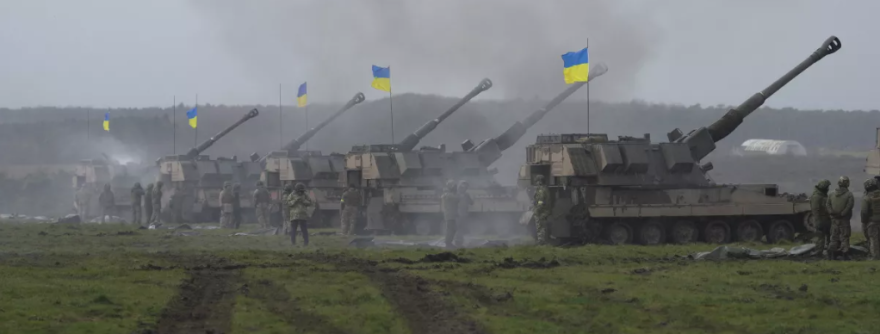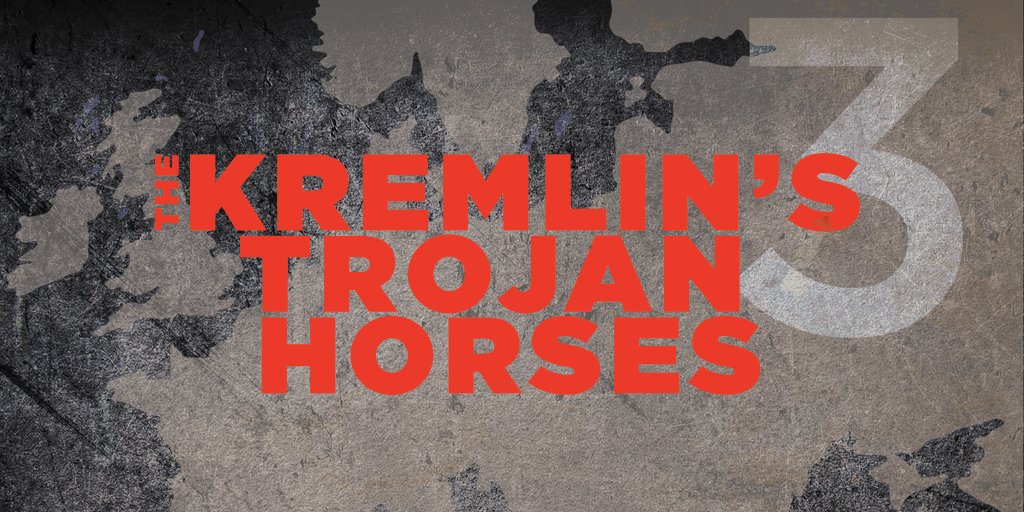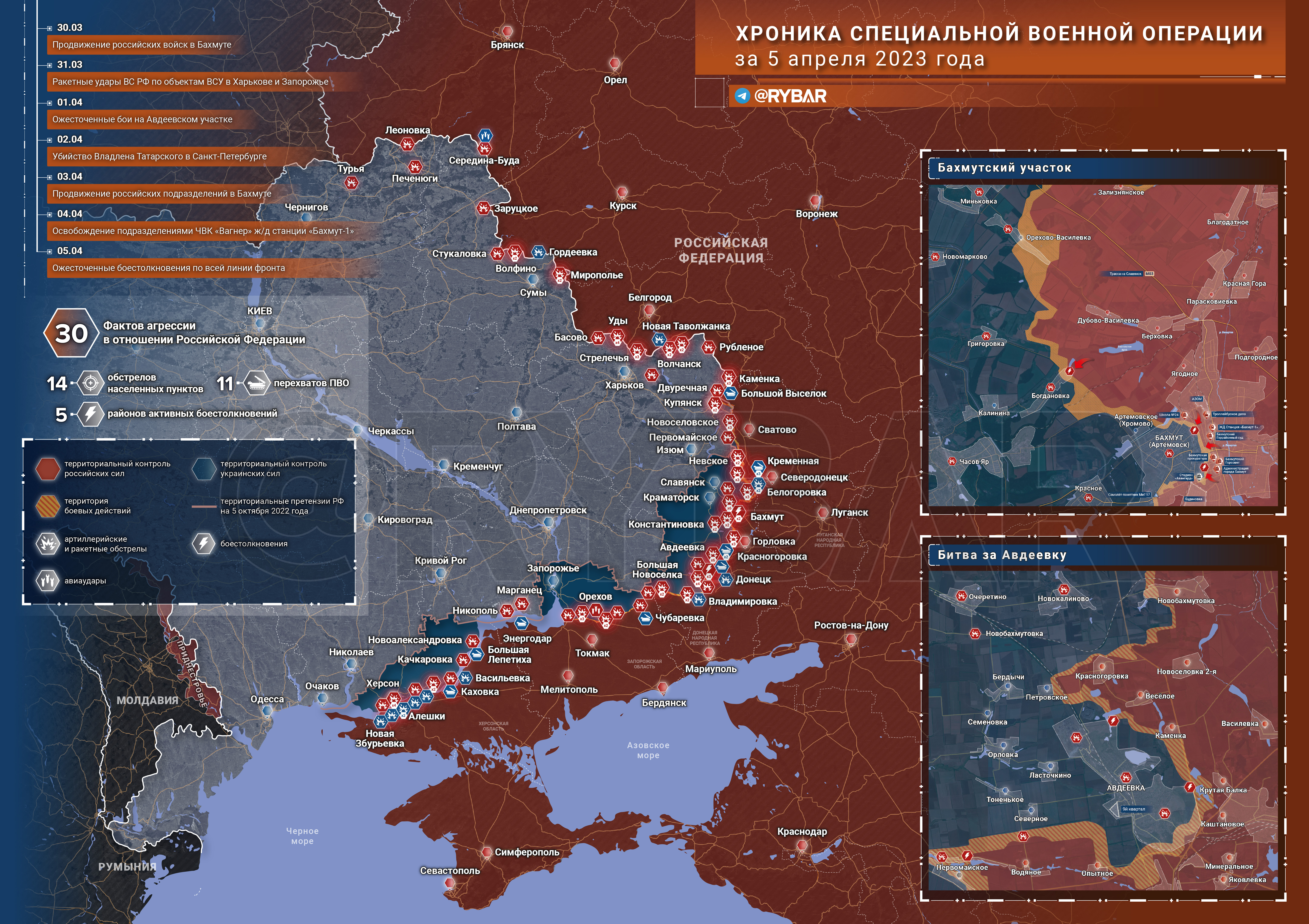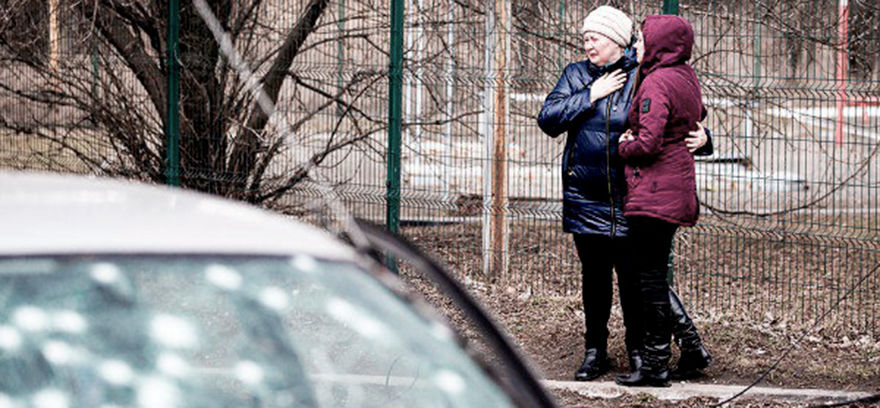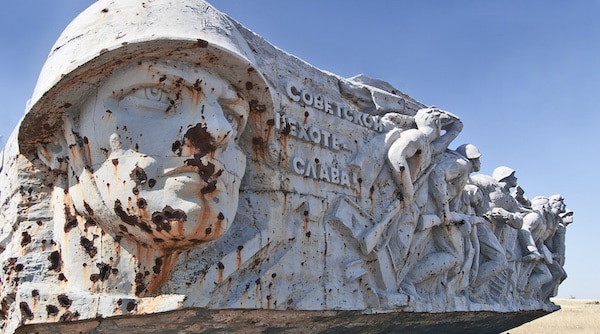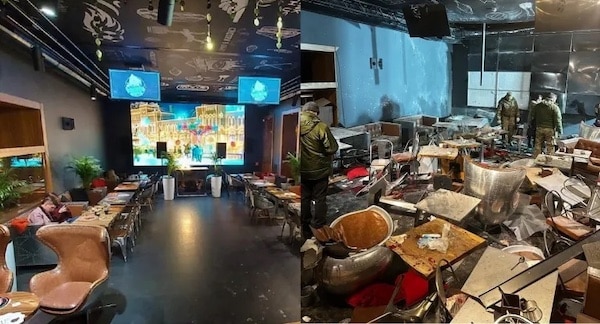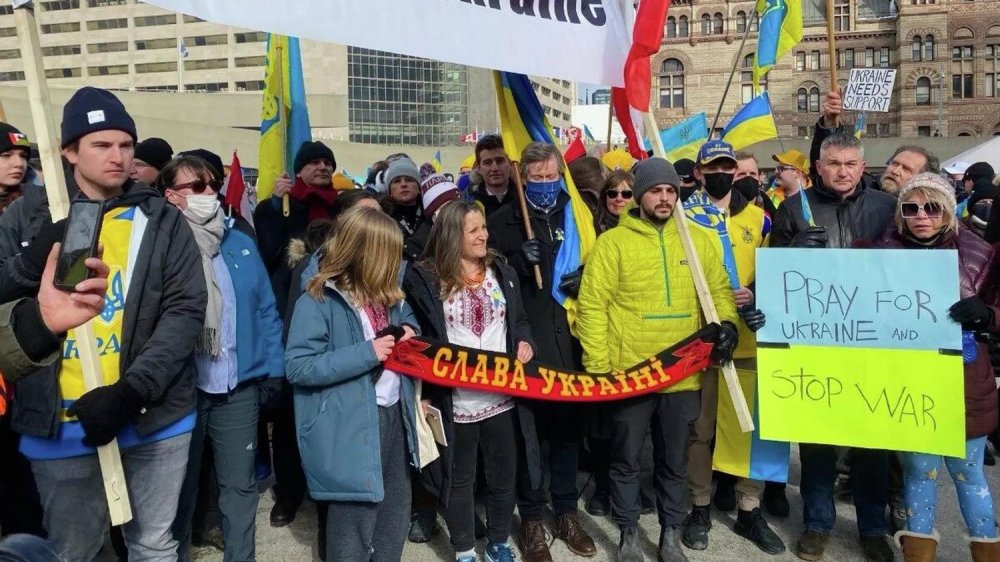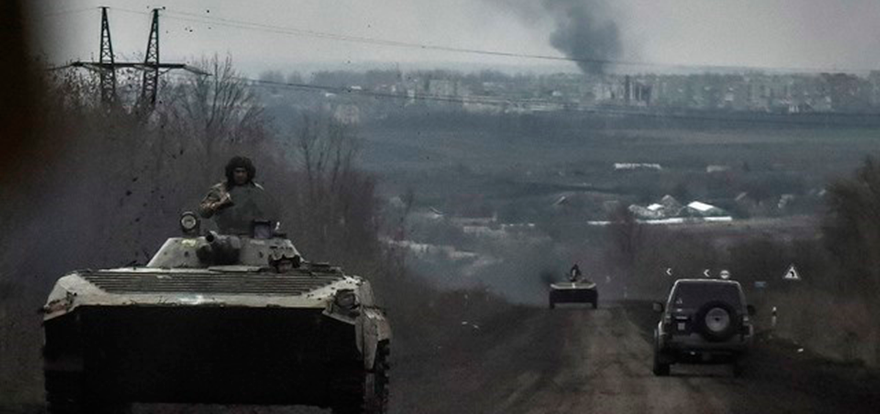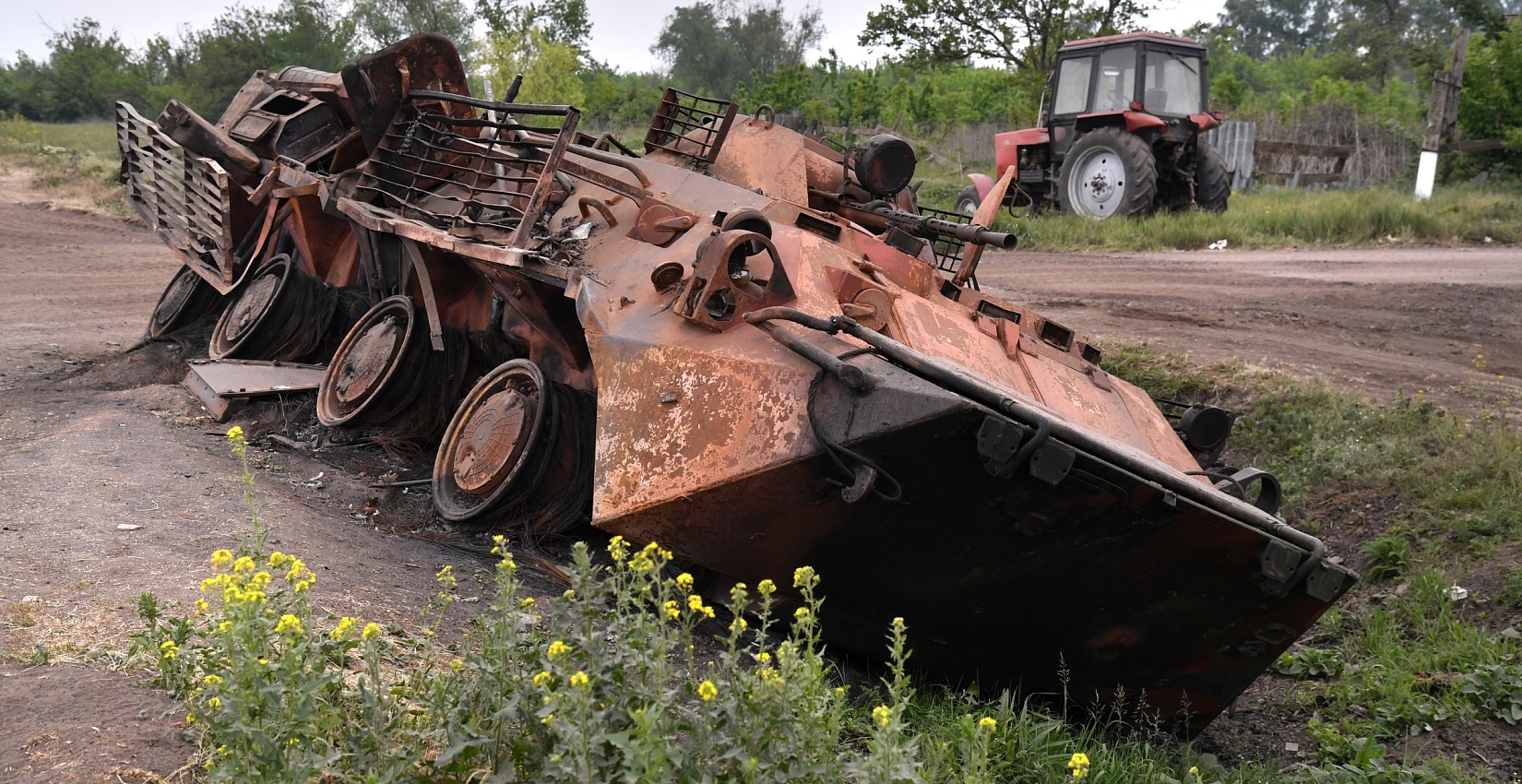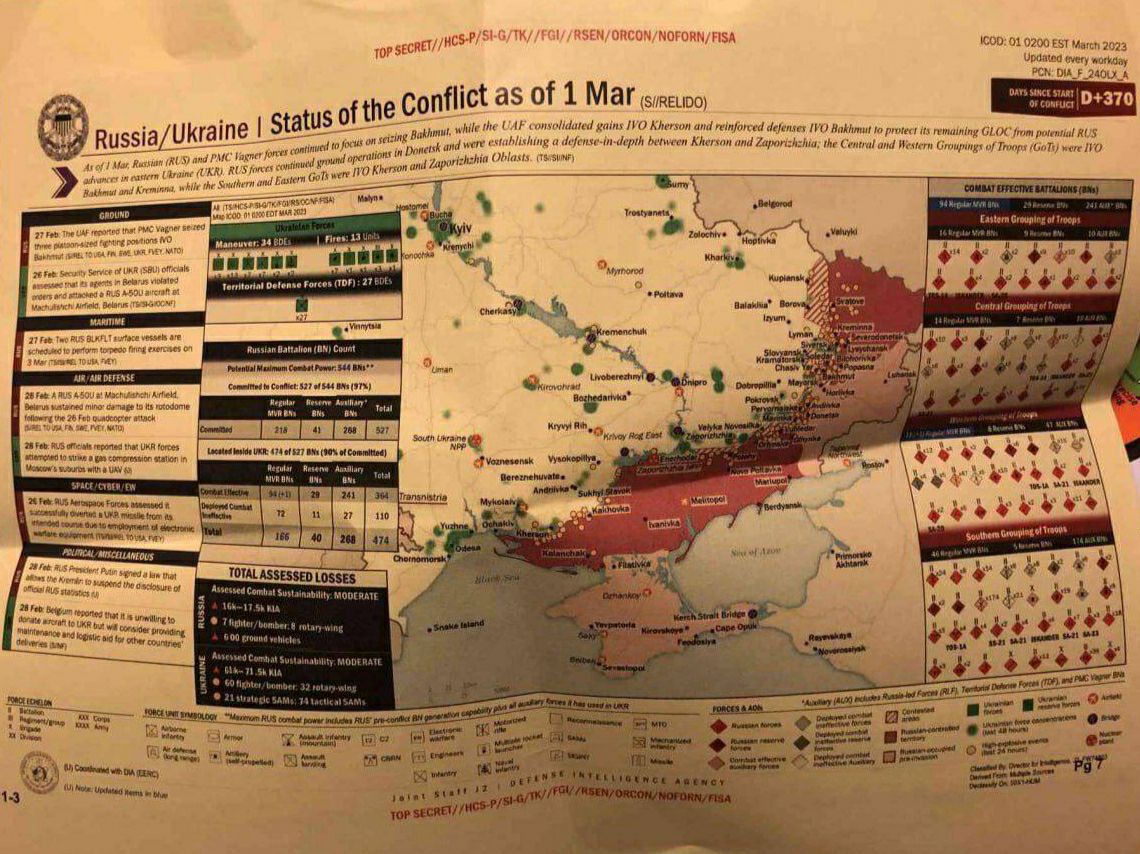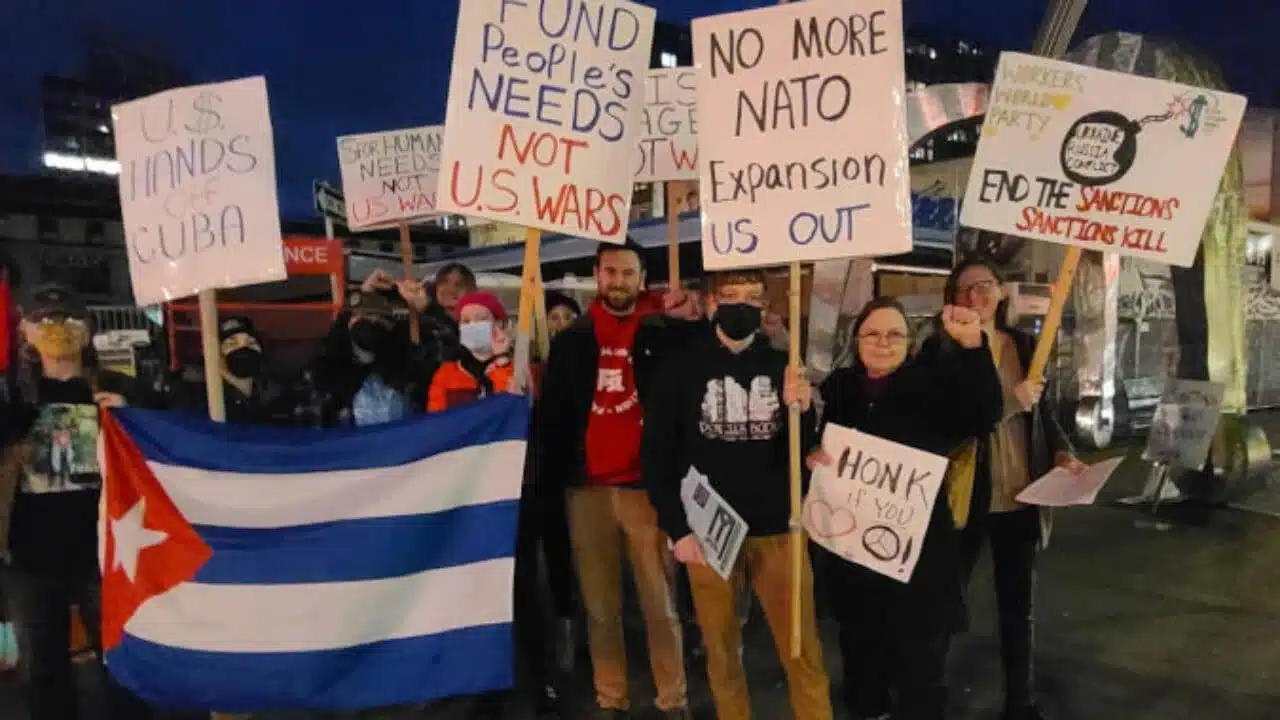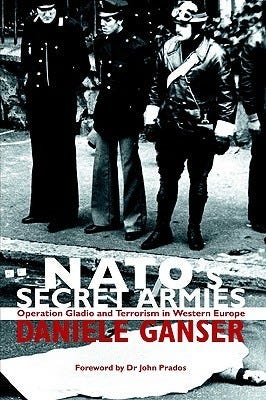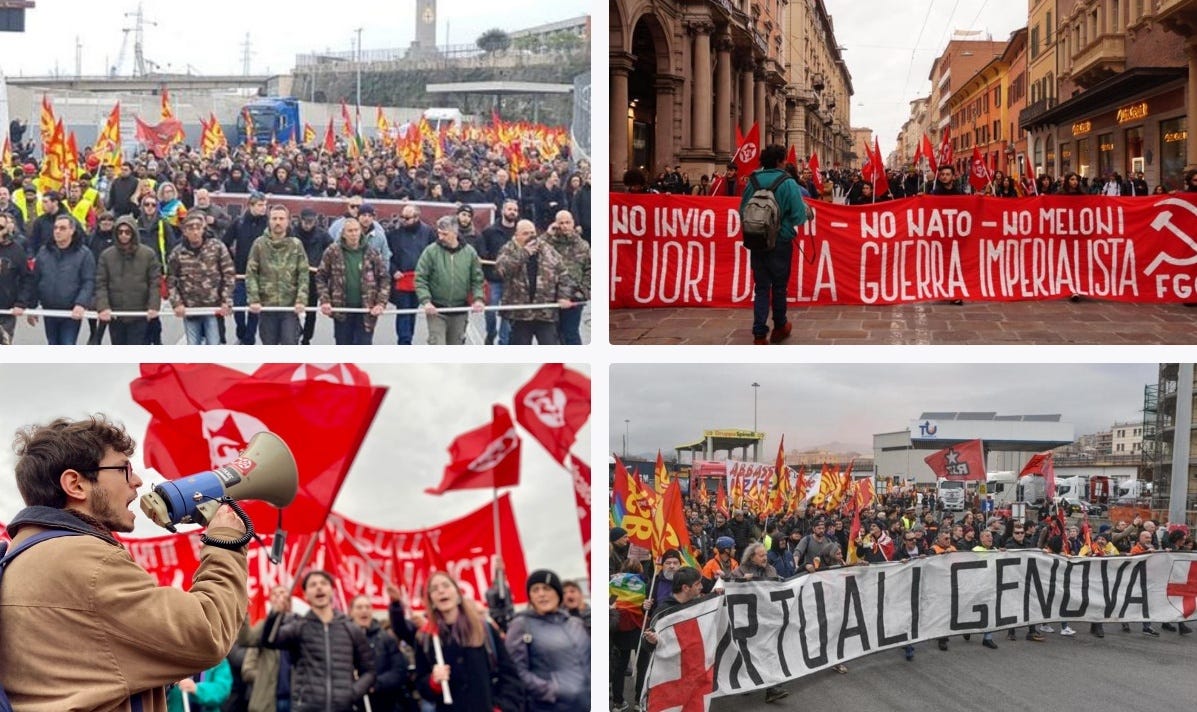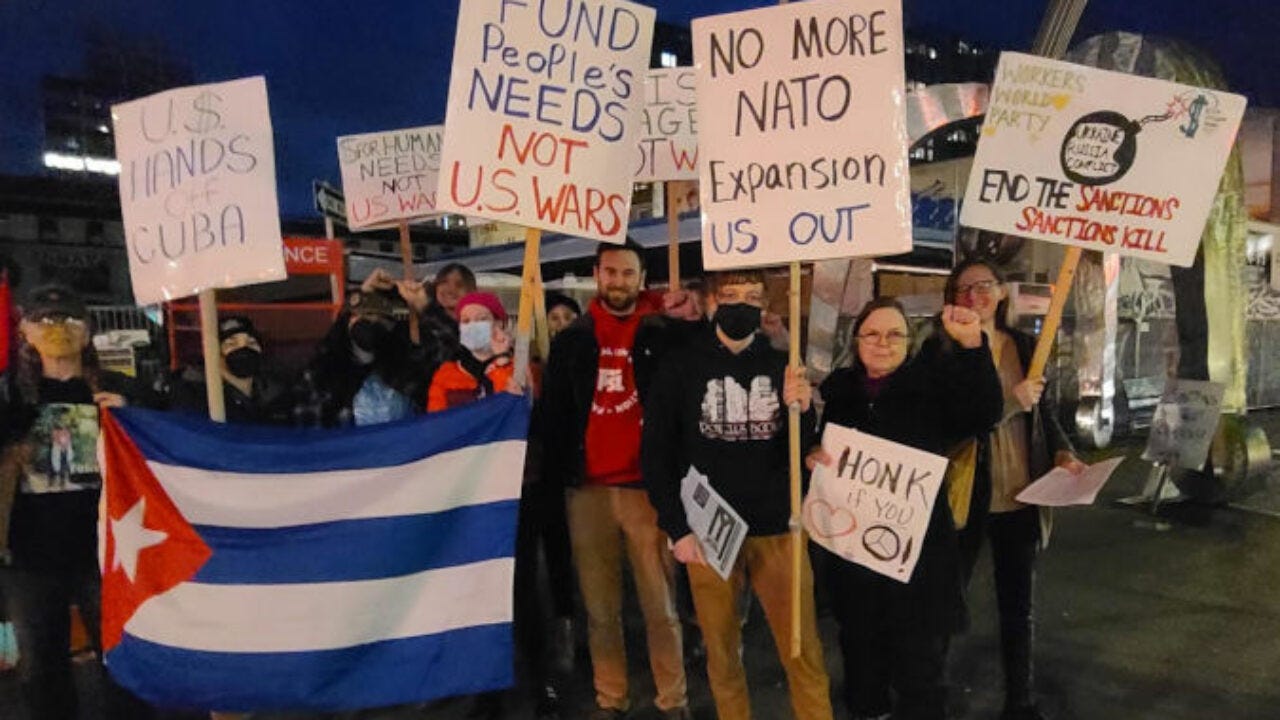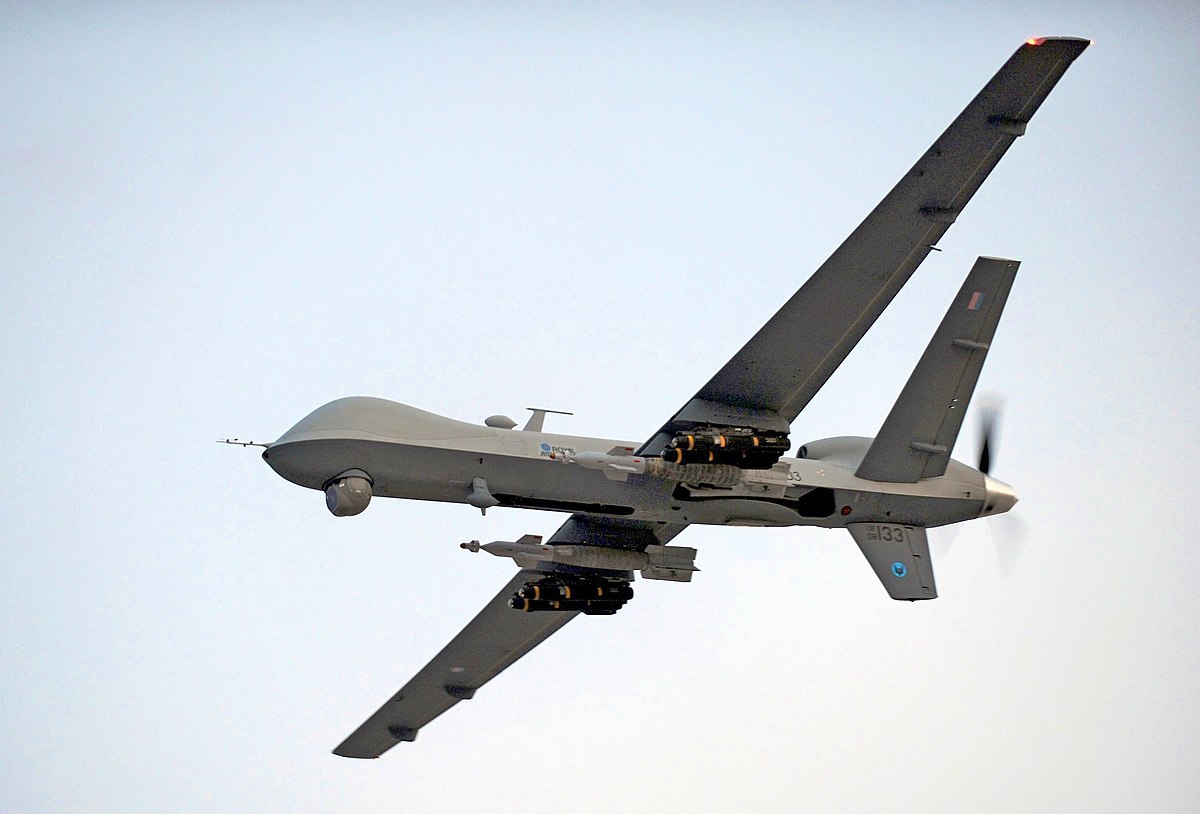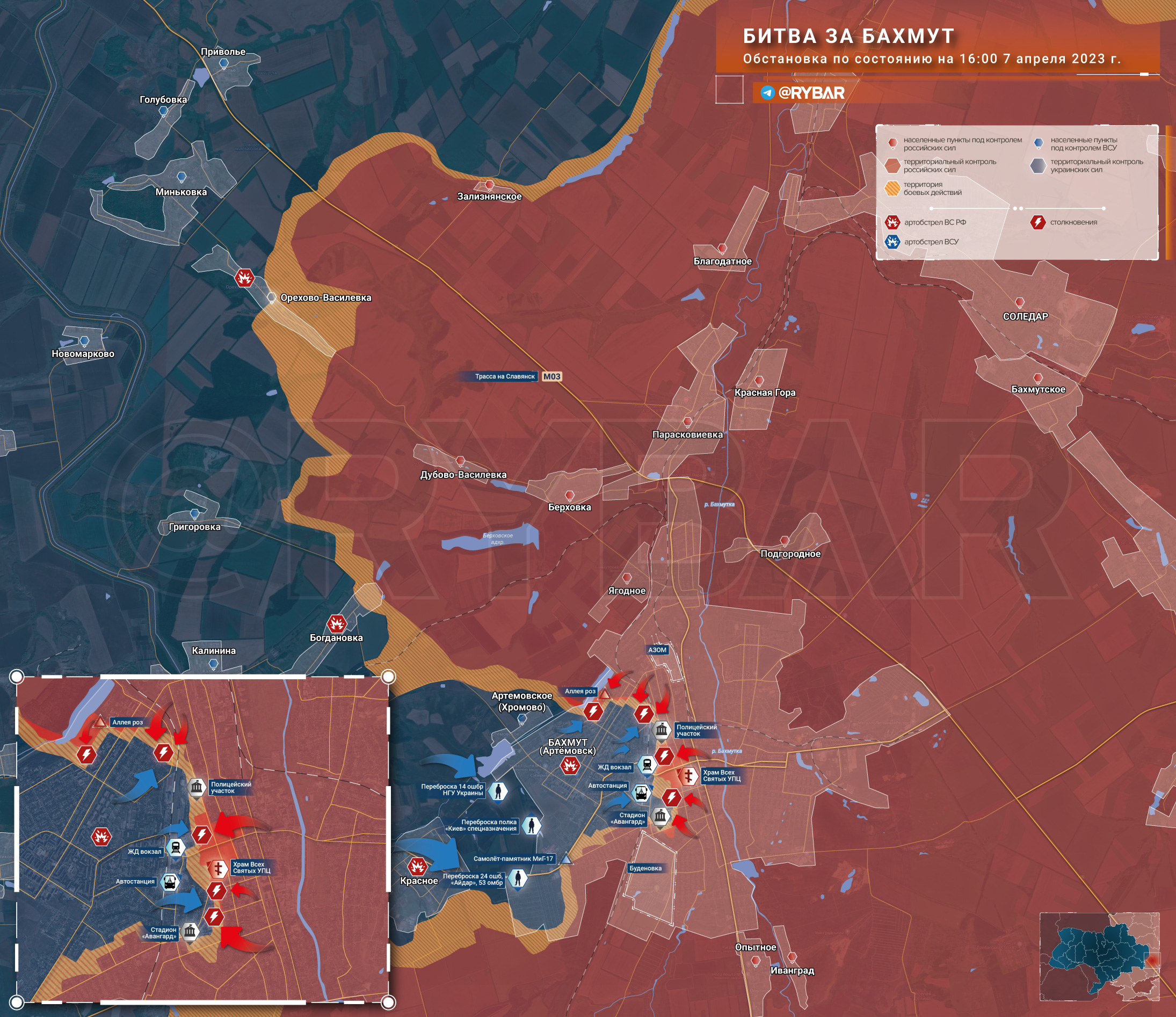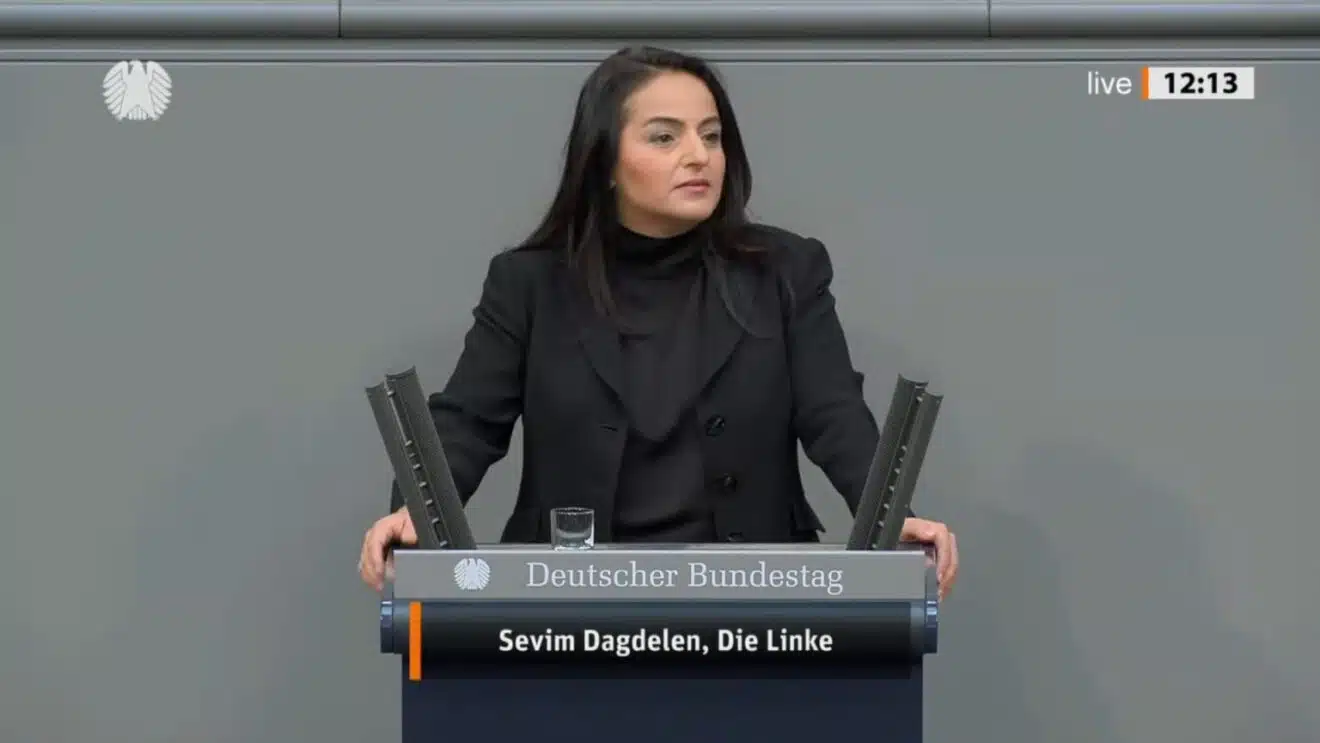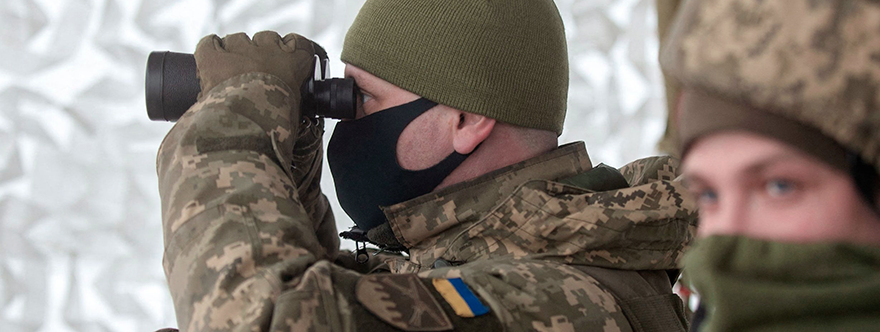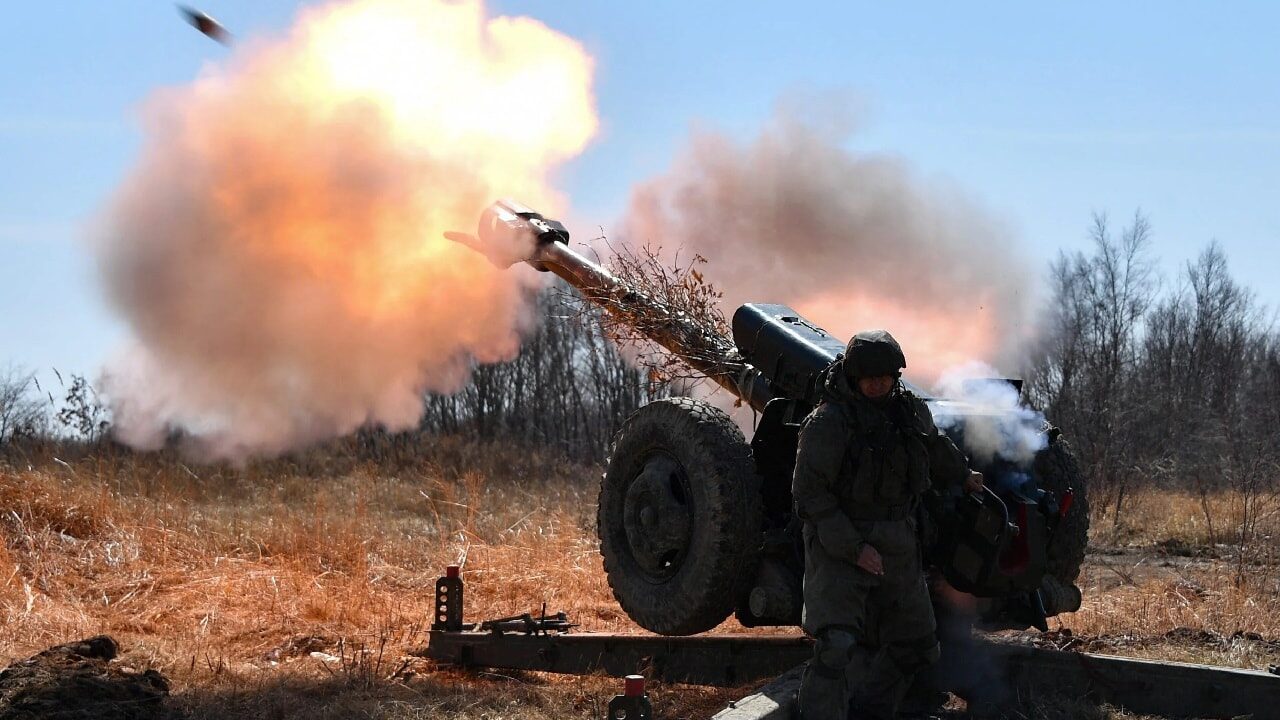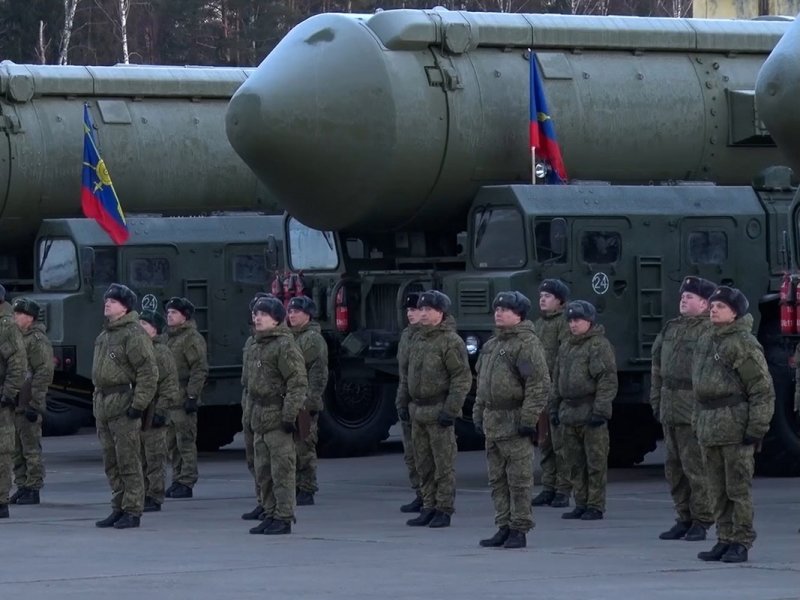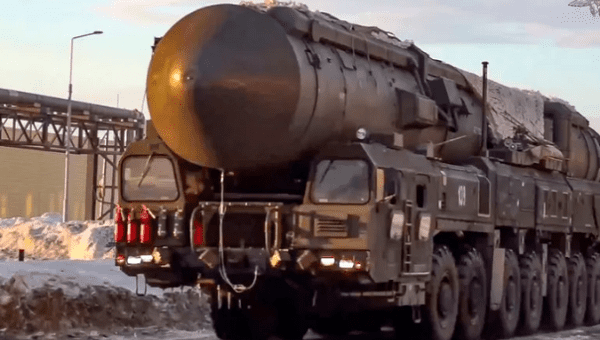
Military truck transports a ballistic missile. | Photo: Twitter/ @eha_news
On Friday, Russia also announced that it has no plans for a second wave of mobilization.
On Thursday, Russian Deputy Foreign Minister Sergei Ryabkov said that his country will continue to exchange information with the United States on its ballistic missile launches.
Russian media quoted Ryabkov as saying on Wednesday that Russia had halted all information exchanges with the United States, following Moscow's decision to suspend its participation in the New Strategic Arms Reduction Treaty (New START).
Ryabkov clarified that Russia would adhere to the restrictions outlined in the treaty on a voluntary basis, and would continue to implement a 1988 bilateral agreement between the United States and the Soviet Union that requires each side to notify of any intercontinental or submarine ballistic missile launches.
Ryabkov added that the Russian side has officially informed the United States of its position. In lare February, President Vladimir Putin signed a law officially suspending Russia's participation in the New START treaty with the United States.
On Friday, Russia also announced that it has no plans for a second wave of mobilization, as confirmed by Vladimir Tsimlyansky, head of the main organization and mobilization department of the General Staff of the Armed Forces.
"There are no plans for a second wave of mobilization by the General Staff because there are enough citizens who have already been called up for military service, as well as those who voluntarily expressed a desire to participate in the operation," Tsimlyansky said.
The number of citizens who have decided to voluntarily join military service under the enlistment contract has significantly increased. This year's spring draft in Russia will take place as usual from April 1 to July 15 for a total of 147,000 Russians aged 18 to 27.
https://www.telesurenglish.net/news/Rus ... -0002.html
*******
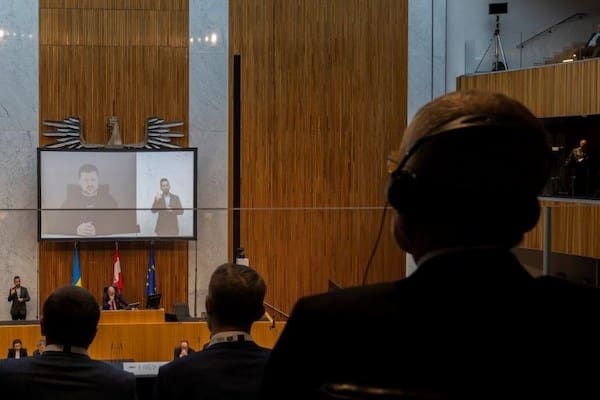
President Zelensky speaks to Austrian House as President Alexander van der Bellen listens. (Photo: Reuters)
Austrian lawmakers walk out during Zelensky address to parliament
Originally published: Al Mayadeen on March 30, 2023 by Agencies (more by Al Mayadeen) | (Posted Mar 31, 2023)
Austrian lawmakers from the opposition Freedom Party (FPOe) walked out of the lower house of Austria’s parliament during a virtual address by Ukrainian President Volodymyr Zelensky.
The politicians stressed that they were opposing the speech because it disregarded Austria’s neutrality principle.
Zelensky, who is begging for more lethal weapons ahead of an expected counteroffensive this spring, joined Austria’s lower house’s morning session via video link.
Little signs with the party insignia and the phrases “space for neutrality” or “space for peace” were left on the desks of lawmakers who left the chamber.
FPOe leader Herbert Kickl told journalists that Zelensky’s address violates Austria’s neutrality principle. It is worth noting that a protest was held outside the parliament building prior to the speech, demanding an upholding of the principle of neutrality.
The big picture
When countries such as Switzerland and Sweden abandoned their neutrality policies under NATO’s pressure, one country refused to bend.
Austria has recently become the center of a heated debate about its neutrality, with detractors suggesting that it should send military supplies to Ukraine. Earlier this month, an open letter inked by Austrian politician and First Vice-President of the European Parliament Othmar Karas urged for a shift in Austria’s security strategy.
Austrians have always regarded neutrality as part of their identity and wish to remain as disconnected from global politics as possible. It is worth noting that the current Chancellor Karl Nehammer was the first and only European to visit Moscow following the start of the war, while Austria’s President, Alexander van der Bellen, visited Kiev.
Maintaining communication connections with all sides is consistent with Vienna’s overall foreign policy strategy.
With the war entering its second year, there is mounting international pressure to show stronger support for Ukraine and take a harsher position against Russia.
All of this points to wider unresolved issues among NATO member states, which must contend with the fact that some states, such as Austria, do not perceive the Union as a cohesive geopolitical actor.
https://mronline.org/2023/03/31/austria ... arliament/
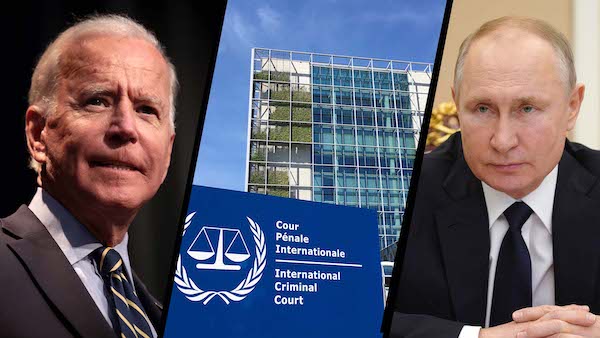
U.S. threatened to invade International Criminal Court. Now it loves ICC for targeting Putin
By Ben Norton (Posted Mar 31, 2023)
Originally published: Geopolitical Economy Report on March 29, 2023 (more by Geopolitical Economy Report) |
Many countries in the Global South have denounced the International Criminal Court as a neocolonial institution, biased in favor of the West. Its leadership has been dominated by Europeans, and as of 2016, only Africans had been brought to trial at the court.
In a rare point of agreement, the United States has also opposed the International Criminal Court (ICC) since its inception. The U.S. is not a member of the ICC, and Washington has even imposed sanctions on its top officials and threatened to arrest judges and prosecutors.
In fact, when the court first opened in the Netherlands in 2002, the United States passed a law known as the “Hague Invasion Act”, according to which Washington threatens to send its soldiers to free anyone being tried at the ICC who is a U.S. citizen or is deemed important to its “national security” interests.
But after relentlessly attacking the ICC for its 21-year history, Washington has suddenly done a 180, and now publicly supports the ICC in its attempt to arrest Russian President Vladimir Putin.
On March 17, the ICC’s Polish president, Piotr Hofmański, issued an arrest warrant for Putin, over alleged atrocities committed in the proxy war in Ukraine between NATO and Russia.
The ICC arrest warrant was issued almost exactly 20 years to the day after the beginning of the U.S. invasion of Iraq, which caused more than 1 million deaths, and which even United Nations Secretary General Kofi Annan said was illegal and violated the UN Charter.
Not a single U.S. official was held responsible for the war crimes committed in Iraq. But the ICC now has its sights on Russia.
Russia is not party to the ICC. Ukraine is not a full member either.
Moscow said the “criminal prosecution is obviously illegal” and is a reflection of the Western-dominated court’s “clear hostility” to Russia.
Despite the fact that the United States is not a member of the ICC, President Joe Biden strongly supported the court’s arrest warrant.
In collaboration with the European Union, U.S. Secretary of State Antony Blinken is pressuring countries that are members of the ICC to comply and arrest Putin.
This is quite a reversal for Blinken, because in March 2021, when the court was investigating Israel over war crimes it committed in the occupied Palestinian territories, the top U.S. diplomat published a furious statement denouncing the ICC.
Blinken roared:
The ICC has no jurisdiction over this matter. Israel is not a party to the ICC and has not consented to the Court’s jurisdiction, and we have serious concerns about the ICC’s attempts to exercise its jurisdiction over Israeli personnel. The Palestinians do not qualify as a sovereign state and therefore, are not qualified to obtain membership as a state in, participate as a state in, or delegate jurisdiction to the ICC.
Like Israel and the United States, Russia is not a member of the ICC. But just two years after arguing that the court cannot investigate non-member Israel over its war crimes, Blinken is suddenly insisting that the ICC must take action against non-member Russia on behalf of non-member Ukraine.
U.S. imposes sanctions on ICC, threatens family members of officials
Blinken’s predecessor went so far as to impose sanctions on top ICC officials.
In 2020, when President Donald Trump was in office, the ICC opened an investigation into war crimes committed in Afghanistan by the U.S., NATO, and Afghan government allies.
In response, Trump’s former CIA Director turned Secretary of State Mike Pompeo delivered an angry rant denouncing the court.
“We oppose any effort by the ICC to exercise jurisdiction over U.S. personnel. We will not tolerate its inappropriate and unjust attempts to investigate or prosecute Americans”, he declared in March.
Pompeo blasted the ICC as “an embarrassment” and “a so-called court which is revealing itself to be a nakedly political body”. He asserted that “we are exposing and confronting its abuses”.
The top U.S. diplomat even threatened the family members of top ICC officials, vowing, “We want to identify those responsible for this partisan investigation and their family members”.
Later that September, the U.S. State Department hit the court’s chief prosecutor Fatou Bensouda and her colleagues with sanctions.
When the Biden administration entered office in early 2021, it removed these U.S. sanctions on the ICC. But Washington still kept attacking and undermining the court.
U.S. state media outlet Voice of America cited Blinken, who stressed that Washington continued “to disagree strongly with the ICC’s actions relating to the Afghanistan and Palestinian situations” and object to ICC “efforts to assert jurisdiction over personnel of non-States Parties such as the United States and Israel”.
That is to say, the Biden administration strongly opposed the ICC’s efforts to investigate U.S. and NATO war crimes committed in Afghanistan and Israeli war crimes committed in the occupied Palestinian territories.
But now that the ICC is going after Putin, the political class in Washington is ecstatic.
The military leadership in the Department of Defense, on the other hand, is more cautious.
The New York Times reported in early March, just a week before the ICC issued its arrest warrant for Putin:
The Pentagon is blocking the U.S. from sharing evidence on Russian atrocities in Ukraine with the International Criminal Court, officials said. Military leaders fear setting a precedent that might pave the way for it to prosecute Americans.
The ICC’s well documented bias against the Global South, and Africa in particular
The International Criminal Court is only 21 years old, but it has clearly demonstrated an extreme bias toward the Global South, and against Africa in particular.
The Los Angeles Times published an article in 2016 that clearly illustrated the one-sidedness:
Only Africans have been tried at the court for the worst crimes on Earth.
That same year, Canada’s state media outlet CBC reported: “International Criminal Court facing exodus of African nations over charges of racism”.
CBC acknowledged that “nine of the 10 cases currently under investigation by the ICC are based in Africa”.
Burundi, Gambia, and South Africa condemned the ICC as a racist institution, vowing to withdraw from the court.
Gambia’s information minister said the ICC “is in fact an International Caucasian Court, for the prosecution and humiliation of people of colour, especially Africans”.
In 2016, Gambia did withdraw from the court.
South Africa left as well—although its high court later revoked the withdrawal.
In 2017, the African Union called on its members to leave the ICC.
African intellectuals have since continuously denounced the ICC as a neocolonial institution.
Gambian ICC prosecutor Fatou Bensouda appeared to try to change the court’s reputation by opening the investigations into U.S. and NATO war crimes in Afghanistan and Israeli war crimes in the occupied Palestinian territories.
The Trump administration hit back with sanctions and threats. Israel’s far-right Prime Minister Benjamin Netanyahu responded by baselessly accusing the ICC of “anti-semitism”.
But Bensouda’s efforts—as minimal as they were—were thwarted when her nine-year term ended in 2021.
She was replaced with the ICC’s current prosecutor, a Karim Ahmad Khan, a British lawyer.
Khan is the brother of right-wing politician Imran Ahmad Khan, a former member of Parliament for the UK Conservative Party (who also happens to be a convicted pedophile).
Almost immediately after Karim Khan took over the ICC, he ended the investigations into U.S. and NATO war crimes in Afghanistan and Israeli war crimes in the occupied Palestinian territories.
Reuters cited Afghan human rights activist Horia Mosadiq, who called Khan’s decision “an insult to thousands of other victims of crimes by Afghan government forces and U.S. and NATO forces”.
Khan claimed in 2021 that the ICC was struggling with a lack of resources and would instead focus on “the scale and nature of crimes within the jurisdiction of the court”.
But the issuing of an arrest warrant for the president of Russia—a non member—over alleged atrocities committed in Ukraine—which is not a full member either—clearly contradicts Khan’s purported commitment to focus on “crimes within the jurisdiction of the court”.
The Israeli media revealed that Israel, which is not a member of the ICC, had “worked hard behind the scenes” to pressure countries that are parties to the court to elect Khan as chief prosecutor.
In 2022, the Times of Israel praised Khan, noting that the “new ICC prosecutor has not issued a single public statement nor taken any single public action regarding Israel-Palestine to date”.
The Israeli newspaper added excitingly, “Many Israeli officials believe that Bensouda would already have taken actions and maybe even have issued arrest warrants had she continued in office past her nine-year term”.
The ICC is not a UN body—the ICJ is
Washington’s opposition to the International Criminal Court goes back to before it was even officially opened in 2002.
On the last day of 2000, just three weeks before his term ended, U.S. President Bill Clinton signed the Rome Statute that laid the foundations for the ICC. But his successor President George W. Bush later “unsigned” the treaty.
The Bush administration then waged a political war against the newly created ICC.
Arch-neoconservative John Bolton, who helped lead Bush’s State Department, called the U.S. withdrawal from the ICC “the happiest moment of my government service”. (Bolton also threatened the family members of the chief of the Organization for the Prohibition of Chemical Weapons, José Bustani, telling him, “We know where your kids live”.)
Even the billionaire oligarch-funded lobby group Human Rights Watch, which is notorious for its pro-Western bias, warned in July 2002 that the “principle of universal justice is still under serious threat from Washington”. And that was before the U.S. government passed the notorious “Hague Invasion Act”.
Following Bush, Presidents Obama, Trump, and Biden have refused to re-sign the Rome Statute, meaning the U.S. is not a member of the ICC.
After Trump appointed Bolton as his national security advisor, the neoconservative hawk promised in 2018: “We will provide no assistance to the ICC. We will not join the ICC. We will let the ICC die on its own. After all, for all intents and purposes, the ICC is already dead to us”.
Bolton even threatened to arrest ICC judges and prosecutors, proclaiming, “We will ban its judges and prosecutors from entering the United States, we will sanction their funds in the U.S. financial system, and we will prosecute them in the U.S. criminal system. We will do the same for any company or state that assists an ICC investigation of Americans”.
Only 123 countries are members of the ICC. (The United Nations recognizes 193 countries on Earth, meaning less than two-thirds are parties to the ICC, and these nations represent less than half of the global population.)
Prominent countries that are not state parties include the U.S., Israel, Ukraine, Russia, China, India, Pakistan, Indonesia, Ethiopia, Cuba, Vietnam, Türkiye, Saudi Arabia, and Qatar.
Despite popular confusion, the ICC is not an organ of the United Nations. The court is independent from the UN’s official judicial arm, the International Court of Justice (ICJ).
While the ICC was founded in 2002, the ICJ opened in 1945. Further compounding the confusion is the fact that both are located in the Hague, in the Netherlands.
The ICJ litigates state disputes, whereas the ICC focuses on individuals.
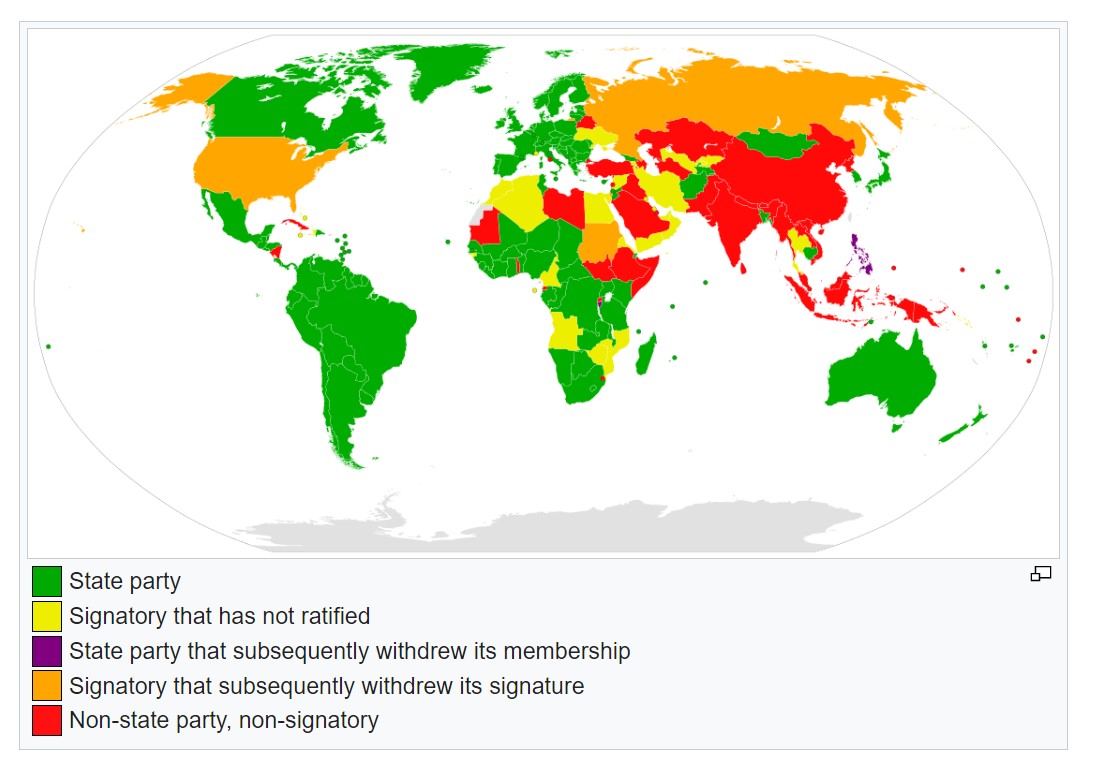
Signatories of the Rome Statute that established the International Criminal Court
But the ICJ has been very limited in its capabilities due to a fundamental problem with the structure of the UN: permanent members of the Security Council can use their veto to block the implementation of the court’s decisions.
The United States has done precisely this, effectively neutering the ICJ.
In 1984, Nicaragua took the U.S. to the Hague over its support for the Contras, far-right death squads that systematically used terrorism against civilians in an attempt to violently overthrow the Central American nation’s revolutionary Sandinista government.
In the case Nicaragua v. United States of America, the ICJ found Washington guilty of violating international law, by supporting the Contra terrorists and putting mines in Nicaragua’s ports.
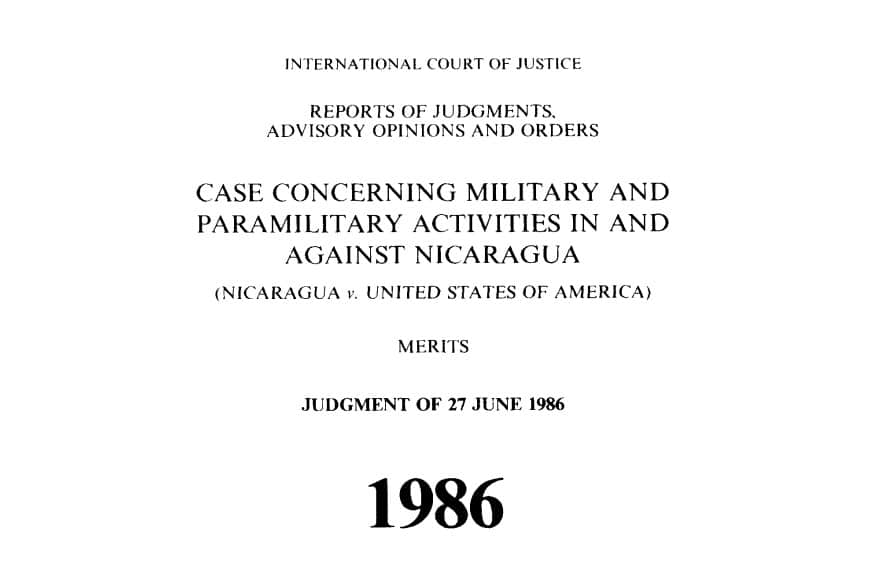
Nicaragua v. United States of America
The ICJ ordered that the U.S. pay Nicaragua reparations. But Washington refused to do so, and used its veto in the Security Council to prevent any implementation of the ruling.
https://mronline.org/2023/03/31/u-s-thr ... nal-court/
*********
Belarusian Mercenaries Fighting for Kiev Plan Terrorist Attacks against Minsk
Posted by INTERNATIONALIST 360° on MARCH 30, 2023
Lucas Leiroz
Belarus claims mercenaries plan to destabilize situation in countrySabotage operations may take place within the territory of the Republic of Belarus. According to information provided by an important Russian official, Belarusian mercenaries who are currently fighting for the Ukrainian side would be sent back to their homeland with the aim of planning mutiny, boycott and terrorism operations against the local government. The case makes even more evident the need for broad military cooperation between Moscow and Minsk.
The information was announced by Deputy Minister of Foreign Affairs of Russia Mikhail Galuzin. According to him, nationalist units in Ukraine formed by Belarusian mercenaries could send some of their members back to the country in order to incite domestic terror. Galuzin claims that these groups have broad military and intelligence support from the Ukrainian government and consequently from the western powers that sponsor Kiev. He also said that these groups are becoming increasingly “tougher”. So, considering this fact, complex, large-scale illegal operations could be planned.
Galuzin also mentioned that recently several leading neo-Nazis from Belarus have made it clear in public statements that they plan to use their combat experience in the Ukrainian conflict to fight against the government of Aleksandr Lukashenko. These plans obviously serve some of the main interests of the Western-Ukrainian axis, as Minsk is an ally of Moscow and both states have significantly advanced cooperation in all areas.
“Belarusian nationalist formations (…) – who are actively supported by the Kiev authorities and their Western backers have become significantly tougher (…) The leaders and commanders of those cut-throat mercenaries openly say that they plan, in the future, to apply their combat experience to topple the current Belarusian leadership”, he said during an interview to a Russian media outlet.
It is important to remember that recently several attacks have taken place against the people of Belarus and Minsk’s security forces. In addition to many incidents in the border region, with Ukrainian missiles hitting Belarusian territory and even causing the death of civilians, in February there was an attack with military drones against a Russian reconnaissance plane placed in Minsk. The responsibility for the act was claimed by the Association of Security Forces of Belarus, better known as “Bypol”, an anti-Lukashenko paramilitary organization, which, in addition to illegal activities in Belarus, constantly sends neo-Nazi volunteers to Ukraine.
Galuzin believes that these provocations were a way to “test” the defense capacity of the Belarusian forces, thus preparing for future large-scale incursions. He, however, expressed confidence that the Belarusian authorities will know how to solve the problem and prevent damage from being caused against the population. In fact, considering the advanced level of integration of the defense and security policies of Belarus and Russia, it is certain that Minsk, in addition to its own mechanisms, will also be able to count on the help of the wide intelligence apparatus of the Russian forces to detect any threats and prevent attacks.
It is curious how the Russian official’s report comes amid the current controversy about the legitimacy of the allocation of Russian nuclear weapons on Belarusian soil. Even though the agreement was made bilaterally, respecting and prioritizing Minsk’s national interests, the Russian-Belarusian nuclear dialogue has been the target of disinformation campaigns promoted by the mainstream media and pro-NATO activists, who try to report the case as a kind of “Russian imperialism”.
Russia and Belarus are historically partner states, which share the same people, history and culture, and there is no reason for distrust in their bilateral relations. Both the government of Aleksandr Lukashenko and his foreign policy focused on cooperation with Moscow are widely supported by the majority of the population, as has already become evident with the absolute failure of all Western attempts to provoke riots and color revolution in the country.
So, in a context of constant global security crisis, with high risks of nuclear war, in addition to several external threats to the security of Belarus, with Ukraine, Poland and the Baltics starting provocations on the borders, it is absolutely normal that cooperation is raised to the nuclear level – as this helps to guarantee Minsk’s sovereignty and protects the local population. Also, the fact that terrorist maneuvers are expected to happen in the country in the near future reinforces that all necessary measures to increase national security must be taken as soon as possible, including the nuclear deterrence power.
It is important to remember that Belarusian intelligence is aware of the Kiev-sponsored terrorist threat since last year, when a national anti-terrorist operation was launched, promoting the militarization of the borders, introducing the combat readiness of the troops and encouraging an exponential intensification of the military partnership with the Russians, both in terms of receiving troops from Moscow and in joint war exercises. In this period, several terrorist networks began to be monitored and saboteurs were neutralized before causing real harm to the people.
Regarding Belarusian fighters in Ukraine, it is most likely that Kiev is organizing attacks like the ones that recently took place in the Russian oblast of Bryansk, when some expatriate Russian neo-Nazi mercenaries assaulted the area and killed civilians. In the same sense, sabotage operations and assassination attempts against specific targets could also be being planned. However, despite the suffering caused to the victims of these confrontations, the military and political gains for the aggressor side are null, which is why Minsk, although at risk of incursions, does not have its sovereignty truly threatened.
https://libya360.wordpress.com/2023/03/ ... nst-minsk/
*******
BORIS YELTSIN'S DOUBLE GAME SPURRED NATO EXPANSION
30 Mar 2023 , 2:53 p.m.
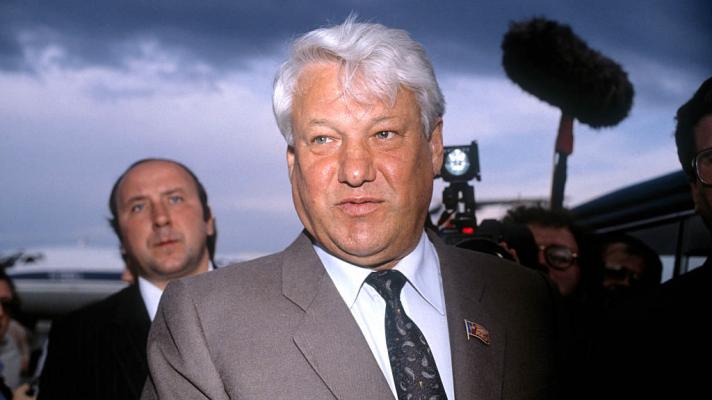
After the fall of the Soviet Union, the West supported Boris Yeltsin as a paragon of democracy (Photo: Getty Images)
British archives show that in 1993 Russian President Boris Yeltsin repeatedly told his Western interlocutors that he personally was not opposed to the accession of Poland, the Czech Republic and Hungary to the North Atlantic Treaty Organization ( NATO), words that even his collaborators considered out of place.
In 1997, President Yeltsin hesitated to participate in the NATO Summit, held in Madrid, where a document was adopted that was to establish cooperation modalities between the Atlantic alliance and the Russian Federation. But that text, which was not mandatory, was only a communication tool used to justify a rapprochement between Yeltsin's public positions and those he expressed in private.
At that time, Russian Prime Minister Viktor Chernomyrdin issued incessant warnings against the position that President Yeltsin expressed in private. As Prime Minister, Chernomyrdin always stressed that the expansion of NATO would "explode" the European continent.
https://misionverdad.com/el-doble-juego ... de-la-otan
WALL STREET JOURNAL JOURNALIST ARRESTED IN RUSSIA FOR ESPIONAGE
Mar 30, 2023 , 2:29 p.m.
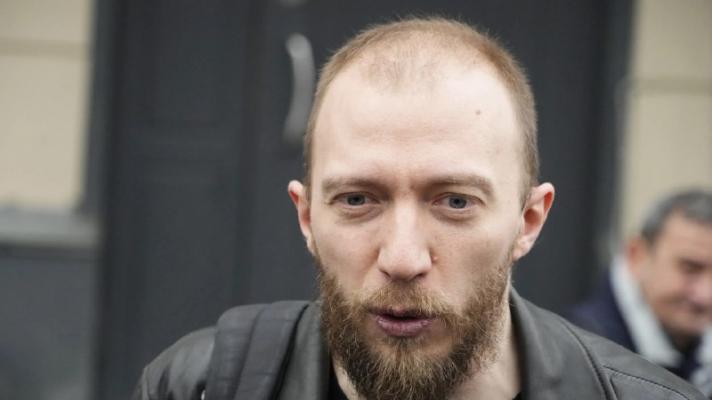
Foreign Ministry spokeswoman Maria Zakharova alleged that Gershkovich used his credentials as a cover for "activities that have nothing to do with journalism" (Photo: AP)
Russia's Federal Security Service (FSB) detained an American journalist for The Wall Street Journal for espionage, an event not seen since the Cold War.
Evan Gershkovich was captured in the city of Yekaterinburg while allegedly trying to obtain classified information, the security service reported on Thursday, March 30, a claim the newspaper denied while demanding his release.
The FSB alleged that Gershkovich "acted on instructions from the US side to gather information about the activities of one of the companies of the Russian military-industrial complex that constitutes a state secret."
In Washington, the Biden government is aware and condemned the arrest "in the strongest terms." Likewise, he reiterated the warnings not to travel to Russia.
The State Department was in direct contact with the Russian government and was trying to gain access to Gershkovich, but Russian Deputy Foreign Minister Sergei Ryabkov ruled out any quick exchange.
For her part, the spokeswoman for the Ministry of Foreign Affairs, Maria Zakhárova, alleged that Gershkovich used his credentials as a cover for "activities that have nothing to do with journalism."
https://misionverdad.com/detenido-perio ... -espionaje
Google Translator
****
The Security Council Fails the World on Nordstream
Posted by INTERNATIONALIST 360° on MARCH 31, 2023
Alfred de Zayas
After the thorough, coherent and credible investigation conducted by Seymour Hersh[1] of the sabotage of Nordstream, any tribunal under the rule of law would commence an investigation of the terroristic bombing. Indeed, in the United States any grand jury would find that the evidence already in the public domain suffices to indict the suspect for the crime and open formal criminal proceedings, a fortiori in the absence of any credible evidence to the contrary.
The investigations conducted by Seymour Hersh constitute a solid basis to justify the establishment of an independent international investigation. Such an investigation would require the consent of those countries whose territorial sovereignty extends over the area where the explosions took place, namely Sweden and Denmark.
Sweden’s obligations vis-à-vis the world
Sweden has already carried out an investigation and should have voluntarily shared the results with the United Nations and all interested parties. Sweden’s silence speaks volumes, because if the Swedish investigation had established Russian or Belorussian responsibility, there is no doubt that Sweden would have made it public. Sweden’s silence can only be interpreted as a cover-up, because the feared consequences of revealing US violations of Swedish and Danish sovereignty, a breach of the peace, a colossal violation of international law and the laws of war. Such a revelation could have exploded NATO in the same manner as the US exploded the pipelines.
If Sweden continues to stonewall and refuses to share the results of the investigation with Germany, Russia and the world, the international community must demand it pursuant to article 19 of the International Covenant on Civil and Political Rights, which stipulates that all persons have the right to access information, the right to truth, the right to seek and impart information of all kinds, especially when the information being withheld concerns criminal acts such as terrorism.
It was the responsibility of the Security Council to have demanded from Sweden all the information in its possession, and if the information were found to be inconclusive, the Security Council should have motu proprio established an International Commission of Inquiry (COI), because such a terrorist attack on a civilian infrastructure constituted a breach of international peace and security for purposes of article 39 of the UN Charter. The world has a right to know exactly what happened.
The Security Council fails the world
On 27 March 2023 the United States succeeded at the Security Council in blocking a resolution to establish such a COI. All countries who failed to vote for the resolution have effectively betrayed the trust conferred upon them and failed in their duties to the world as members of the Security Council.
Now it is up to the General Assembly to demand Sweden to come forward with all the evidence available. Perhaps the Swedish Supreme Court could order the Swedish government to produce the evidence and not to hide behind false arguments of “national security”. The Swedish Supreme Court should similarly ensure that none of the evidence is destroyed or tampered with.
Joe Biden’s threats are tantamount to a smoking gun
It was certainly careless of Joe Biden to have threatened that if Russia invaded Ukraine, Nordstream would be no more. This was repeated by officials of the State Department. Moreover, the US had already done everything in its power to frustrate the completion of Nordstream II, as evidenced by the illegal unilateral coercive measures imposed on businesses throughout the world to intimidate enterprises such the Dutch-Swiss Allseas and a Swiss insurance company with colossal penalties. Such actions were illegal, constituted interference in the internal affairs of states and illegal extra-territorial application of US laws, but the world somehow tolerated them. Still they contribute to the growing legal dossier against the US. Notwithstanding the illegal UCMs, Nordstreem 2 was completed and ready to operate since 2021. Then came the massive pressures brought by the US on Germany not to certify it.
Presumption of innocence
Someone in the US falsely invoked the principle “in dubio pro reo” – in doubt for the accused. This principle only applies with regard to persons, but not with regard to governments, who usually hold and control most of the evidence. No country can expect to be cleared of suspicions of having committed an offence simply by stonewalling. The Roman adage “if you did it, deny it” (si fecisti, nega) does not erase the circumstances that clearly point at a given country. The first question that everyone has to ask is who benefits from the act in question. Who benefits from blowing up Nordstream? In his defence plaidoyer Pro Milone, Cicero already posed the crucial question “Cui bono?”. Indeed, every court has to come to grips with this question and must give a satisfactory answer. There are many countries that commit crimes and then play innocent. True enough, Israel keeps silent about its terroristic attacks against Syria and Iran, about its targeted assassinations. But everyone knows “Who done it”.
Burden of proof
Circumstantial evidence is used by all domestic and international courts, especially when the “corpus delicti” is not entirely accessible, e.g. when the evidence has been destroyed by the perpetrators, when governments deliberately tamper with the information and erase digital records. The UN Human Rights Committee has ample experience in judging cases where governments stonewall. Already in 1982, the Committee reversed the burden of proof in the case of Bleier v. Uruguay[2]. In that case the Uruguayan military junta denied knowledge about the whereabouts of Eduardo Bleier, who had been arrested by Uruguayan police, held in a prison in Montevideo, where his wife would bring him clothes and food. One day Bleier “disappeared”. By a note of 14 August 1981 to the Human Rights Committe the Uruguayan government contended that: “the Committee displays not only an ignorance of legal rules relating to presumption of guilt, but a lack of ethics in carrying out the tasks entrusted to it, since it so rashly arrived at the serious conclusion that the Uruguayan authorities had put Eduardo Bleier to death.” The Committee responded that: “in accordance with its mandate under article 5 (1) of the Optional Protocol, the Committee has considered the communication in the light of the information made available to it by the authors of the communication and by the State party concerned. In this connection the Committee has adhered strictly to the principle audiatur et altera pars and has given the State party every opportunity to furnish information to refute the evidence presented by the authors.” This is the constant jurisprudence of the Human Rights Committee since 1982. The burden of proof is reversed when the State hold the information and stonewalls.
Rational reasons to deny responsibility
US intelligence services know exactly what happened, who gave the orders, who conducted the terrorist attack. Of course, the US does not want to admit to a major violation of international law constituting a breach of international peace and security for purposes of article 39 of the UN Charter. The US hides behind silence and secrecy. Indeed, secrecy is a facilitator of crime. Negationism is another enabler of criminality. The US and its propaganda machine have for decades propagated the myth that the US is a “democracy” and that it is a country under the “rule of law”. Yet, the US lies to the American people, as it did with regard to the invasion of Cuba in 1961, the Vietnam War, the Yugoslav, Afghanistan, Iraq, Libya and Syrian wars. Although the US has been proven to be a serial liar, the corporate/mainstream media does what it can to create a positive image of the United States as the “leader” of the “free world”, the “exceptional” or “indispensable country”, as the late Secretary of State Madeleine Albright used to call her adopted country.
Obligations under the UN Charter
The US has no legal justification to refuse to cooperate in an international investigation. The US is obliged under the UN Charter to cooperate in building a just world order. Already the preamble of the UN Charter obligates the United States “to establish conditions under which justice and respect for the obligations arising from treaties and other sources of international law can be maintained”. Among the treaties[3] that the United States must promote and respect are the Convention for the Suppression of Unlawful acts against the Safety of Maritime Navigation, Rome 1988, which obliges parties to either extradite or prosecute alleged offenders who have committed unlawful acts against ships, such as placing bombs on board ships. This was supplemented by the Protocol for the suppression of unlawful acts against the safety of fixed platforms, which extends the requirements to platforms engaged in the exploitation of oil and gas. The latter protocol can be applied per analogiam. Most importantly we must recall the International Convention for the suppression of terrorist bombings, New York 1997, obligating each State to prosecute or extradite such persons.
The US is not the only country that engages in terrorist activities. Israel has done it for decades in total impunity. France tried to do it in the Rainbow Warrior case[4], where the Greenpeace shipRainbow Warrior was sunk by French government divers on 10 July 1985. Although some persons were prosecuted, no one in high office was ever disturbed, and France suffered little damage to its positive international image.
Mechanisms for dealing with the Nord Stream case
As the principal international organ dealing with international peace and security, the UN Security Council has the obligation to condemn terrorism, as it did immediately after the 11 September 2001 attack in New York City and Washington D.C., when it adopted resolution 1368 (2001) condemning in the strongest terms the terrorist attack against the United States and calling on all states to work together urgently to bring the perpetrators to justice.
Not untypical for the United Nations, and in particular the Security Council, the resolution on Nordstream was rejected. Here again we witness the application of double-standards. The silence of the UN with regard to the terrorist sabotage of Nordstream is as deafening as its silence with regard to the 40 US bio-labs in Ukraine. Here again we have to do with massive pressures by the US and NATO upon the Security Council, and by a tradition of primarily serving the interests of the West and not the interests of humanity at large.
This does not mean that there will not be any independent international investigation under the auspices of the United Nations. Fact-finding Missions or Commissions of Inquiry could be established by various UN agencies.
It is now up to the General Assembly to do so. It should be possible to obtain a majority at the General Assembly. Moreover, the General Assembly should go beyond the mere condemnation of the Nordstream sabotage. It should adopt a resolution under article 96 of the UN Charter requestion an advisory opinion from the International Court of Justice on the question of the legal consequences of the blowing up of the pipelines, in particular the civil and penal liabilities involved.
Bearing in mind that international terrorism is within the remit of the UN Vienna Office on Drugs and Crime[5], its terrorism prevention Branch must be seized of the matter and conduct its own investigation as soon as possible.
Yet another UN agency that has competence is the United Nations Environmental Programme[6]with headquarters in Nairobi. The UNEP European Office should investigate the adverse ecological impacts of the blasts to fisheries in the Baltic Sea[7].
I would also propose the filing of an inter-State complaint under article 41 of the International Covenant on Civil and Political Rights. All countries that have NOT put a declaration restricting the Committee’s jurisdiction under article 41 could present such a complaint against the US (which never introduced a reservation about the application of article 41, because it felt that no state would ”dare” activate this procedure). I see issues arising under articles 1, 2, 6, 19, 26.
From the Human Rights perspective, surely the UN Human Rights Council should adopt a resolution condemning the Nordstream sabotage and could establish a Fact Finding Mission to investigate the adverse human rights impacts in the region and the world, as indeed, an attack on energy supplies has widespread consequences, especially for the enjoyment of economic and social rights, and for the achievement of the Sustainable Development Goals.
The Special Procedures of the Human Rights Council have various avenues to further investigate the blasts. Surely it is within the remit of three Rapporteurs – the Rapporteur on Terrorism, the Rapporteur on the Right to Truth, Justice and Reparation, and the Rapporteur on Freedom of Opinion and Expression.
There are also violations of the United Nations Convention on the Law of the Sea. And even if the US never ratified the UN Convention on the Law of the Seas, nothing stops the UNCLOS Secretariat from establishing a working group to study the implications of the sabotage of undersea pipelines.
Whistleblowers
What we most need today is Whistleblowers in the United States, Norway, Sweden and Germany. They know who done it. We need more human rights defenders like Julian Assange and Edward Snowden, who have shown us what monstrous crimes have been committed in our name. If we aspire to call ourselves “democrats”, we must first and foremost defend the right to know, the right to truth. We must demand transparency and accountability and denounce secrecy as the mother of national and international criminality. The credibility of the United Nations – and more generally of international law – is at stake.
Notes.
[1] https://seymourhersh.substack.com/p/how ... ord-stream
[2] http://www.worldcourts.com/hrc/eng/deci ... ruguay.htm. See Jakob Moller/Alfred de Zayas, United Nations Human Rights Committee Caselaw, N.P.Engel 2009, pp. 148 et seq.
[3] https://www.ohchr.org/en/press-releases ... -terrorism
[4] https://www.greenpeace.org/internationa ... w-warrior/
[5] https://www.unodc.org/unodc/en/terrorism/
[6] https://www.unep.org/
[7] https://www.unep.org/regions/europe
https://libya360.wordpress.com/2023/03/ ... ordstream/
******
I'll be late tomorrow.





